By Kostas Barbas, Dina Dede, Nikos Filippaios, Paris Gravouniotis, Dimitris Kaltsas, Tasos Poimenidis, Kostas Rokas, Thomas Sarakintsis, Panagiotis Stathopoulos, Giannis Zavradinos
Translation: Alexandros Mantas, Dimitris Kaltsas
Besides the span of existence and consistence through time, all music lovers have a soft spot for bands and artists who appeared as shooting stars leaving behind scanty, but eloquent samples of their abilities. For varied reasons which in these times one can hardly grasp, the bands that put out but one full-length album since the birth of progressive rock at the end of the 1960s and throughout the 1970s are numerous and some of these releases are held up as some of the most prominent in this specific genre.
The decision to list as many as possible of the most remarkable of them and present them in a feature was taken with enthusiasm, but while dropping names we concluded that the feature should be done in seven parts since the number of the albums is no less than 160.
To maintain a unified approach, this time we refrained ourselves from sticking to a chronological order. The ‘one-album-wonders’ will be presented in a random order and every article will be an incessant journey back and forth in time and reading it will, hopefully, be as a fascinating experience as was writing every single piece.
Fantasy – Fantasy
[Liberty, 1970]
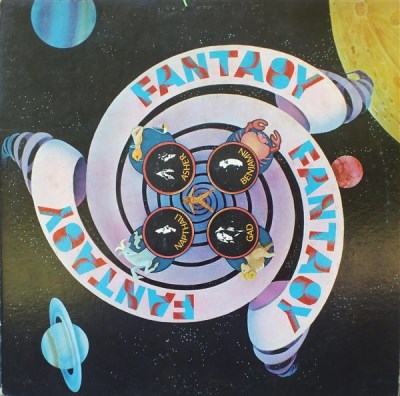
The Americans Fantasy, even though pale in comparison with the British band that bears the same name, are a prime and much beloved example of the marginally post-psychedelic rock era in the U.S.A. They were formed in 1967 in Miami and their reputation for strong live shows was the ticket to open for Led Zeppelin, Frank Zappa and Steppenwolf. Even though success was on the cards, the singer of the band, Billy Robbins, just vanished and was later found dead. He was replaced by a 16-year old girl, Lydia Miller, who possessed a very strong voice and shone in the magnificent and only album that the band released in 1970 through Liberty.
The style of Fantasy is a mixture of hard psychedelic rock with a pompous disposition, together with healthy doses of early progressive rock and the characteristic colour of West Coast sound with its dynamic but simultaneously romantic and at times adventurous nature which had in store many surprises. The transition to the new decade found Fantasy much more ready compared to other contemporary groups and prime for the challenges that come with more technical and intricate music but success never hit the door excluding the response the instrumental Stoned Cowboy stirred on the radio. After their split, they carried on as Year One without Miller who followed a solo career. Unfortunately she passed away in 2008 when she was 55 years old.
Cruciferius – A Nice Way of Life
[Egg, 1970]
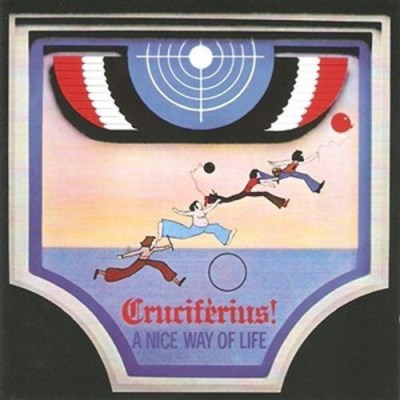 In the beginning of the 1970s the French scene was one of the most up-and-coming and trailblazing one in the entire Europe. A Nice Way οf Life, the only album of Cruciferius, is a crucial part of this scene whose relatively immature style was the precursor of the beautiful things that took place on French soil. Jazz aesthetic, heavy-psych guitars and, overall, a proto-prog feeling are things that describe the record whose side A is significantly superior with cuts like the starter Big Bird and Let’s Try. The ace in Cruciferius’ sleeve is the amazing rhythm section of Bernard Paganotti / Patrick Jean, the former quite known in Magma-fans circle since he participated in the live albums Live/Hai and Üdü Ẁüdü. On the downside, the average English pronunciation and the probably pointless Annabel Lee that closes an album that, one way or another, cannot be viewed as a masterpiece but is does include plenty of astonishing ideas that illustrate the time when it came out. Paganotti, aside Magma, contributed in the magnificent and only album of Weidorje and in Paga Group’s solo project, Jean appeared on two Demis Roussos’ solo albums while Francois Breant and Marc Perru co-existed, besides the former’s solo career, in prog rockers’ Nemo first two albums.
In the beginning of the 1970s the French scene was one of the most up-and-coming and trailblazing one in the entire Europe. A Nice Way οf Life, the only album of Cruciferius, is a crucial part of this scene whose relatively immature style was the precursor of the beautiful things that took place on French soil. Jazz aesthetic, heavy-psych guitars and, overall, a proto-prog feeling are things that describe the record whose side A is significantly superior with cuts like the starter Big Bird and Let’s Try. The ace in Cruciferius’ sleeve is the amazing rhythm section of Bernard Paganotti / Patrick Jean, the former quite known in Magma-fans circle since he participated in the live albums Live/Hai and Üdü Ẁüdü. On the downside, the average English pronunciation and the probably pointless Annabel Lee that closes an album that, one way or another, cannot be viewed as a masterpiece but is does include plenty of astonishing ideas that illustrate the time when it came out. Paganotti, aside Magma, contributed in the magnificent and only album of Weidorje and in Paga Group’s solo project, Jean appeared on two Demis Roussos’ solo albums while Francois Breant and Marc Perru co-existed, besides the former’s solo career, in prog rockers’ Nemo first two albums.
Sergius Golowin – Lord Krishna Von Goloka
[Die Kosmischen Kuriere, 1973]
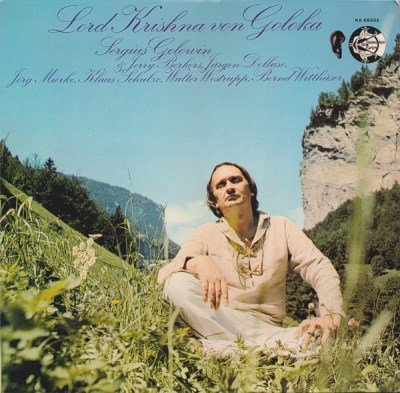
This album which is classified in the category of peculiar, even unorthodox musical expression, was released in 1973 through Die Kosmischen Kuriere, the label of Rolf-Ulrich Kaiser. Some of the best new musicians of the German underground scene, like Klaus Schulze, the psychedelic duet of Bernd Witthüser & Walter Westrupp, as well as Jerry Berkers and Jürgen Dollase from Wallenstein had also faith in him. So, he invited them to his studio again to provide the musical background for the recitations of the Swiss writer and publisher Sergius Golowin on his Hindu teachings. Golowin was one of the weird personalities that the hippie anti-culture brought forth. He was a myth researcher and a scholar of esotericism, he collaborated with Timothy Leary and was portrayed by H.R. Ciger.
In a dew of free improvisation of mystical dizziness, this informal group recorded three grandiose compositions where acid folk, proto-ambient, avant-garde impressionism and influences from the Hindu tradition are blended. The intensely experimental, provocatively psychedelic and strangely melodic result may strike many as formidable. Yet, Lord Krishna Von Goloka is a magnificent document of the early, unconventional and prematurely mature phase of krautrock that addresses to one of the most inaccessible sides of human existence: the metaphysical struggle to keep apace with the often hermetically natural world and, ultimately, the universe.
Delivery – Fools Meeting
[B & C Records, 1970]
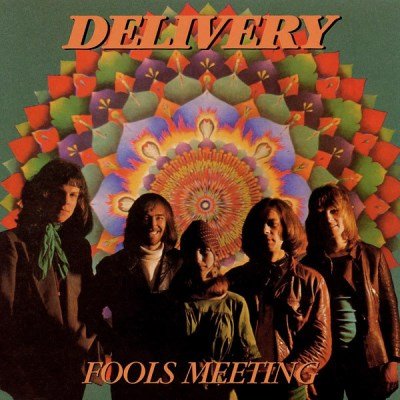 They were formed in 1966 from the ashes of Bruno Band and Miller brothers (Phill: guitar, Steve: keyboards) and Pip Pyle (drums). The line-up was cemented with the additions of Lol Coxhill (wind instruments), Carol Grimes (vocals) and Roy Babbington (bass). In their only release entitled Fools Meeting the blues influences are diminished considerably, opening the way for jazz paths. Grimes justifies (up to a point) her fame as ‘the Grace Slick of England’ with her exuberant and spirited interpretations. Blinded to Your Light and Miserable Man are the pick of the bunch here, together with the cover of It Is Really the Same (Keith Jarrett). After their split, Grimes followed a solo career taking a more blues / jazz / soul slant. Pip Pyle next stop was Gong (Camembert Electrique), while the Miller brothers and Coxhill collaborated in the Waterloo Lilly sessions and Phill Miller also participated in Matching Mole’s two albums. At this point, a stab was made by the Miller brothers, Richard Sinclair and Pip Pyle to reenergize Deliver (without Grimes) and some sporadic gigs and trial recordings took place. Steve Miller pulled out passing the baton to Dave Sinclair and he in turn to Dave Stewart signaling the end of Delivery and the birth of Hatfield and the North. But that’s another story…
They were formed in 1966 from the ashes of Bruno Band and Miller brothers (Phill: guitar, Steve: keyboards) and Pip Pyle (drums). The line-up was cemented with the additions of Lol Coxhill (wind instruments), Carol Grimes (vocals) and Roy Babbington (bass). In their only release entitled Fools Meeting the blues influences are diminished considerably, opening the way for jazz paths. Grimes justifies (up to a point) her fame as ‘the Grace Slick of England’ with her exuberant and spirited interpretations. Blinded to Your Light and Miserable Man are the pick of the bunch here, together with the cover of It Is Really the Same (Keith Jarrett). After their split, Grimes followed a solo career taking a more blues / jazz / soul slant. Pip Pyle next stop was Gong (Camembert Electrique), while the Miller brothers and Coxhill collaborated in the Waterloo Lilly sessions and Phill Miller also participated in Matching Mole’s two albums. At this point, a stab was made by the Miller brothers, Richard Sinclair and Pip Pyle to reenergize Deliver (without Grimes) and some sporadic gigs and trial recordings took place. Steve Miller pulled out passing the baton to Dave Sinclair and he in turn to Dave Stewart signaling the end of Delivery and the birth of Hatfield and the North. But that’s another story…
Cargo – Cargo
[Harvest, 1972]
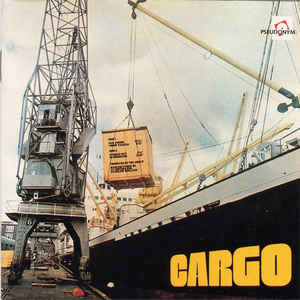 When a friend asks me to recommend an obscure 70s album which is heavy as it gets and the guitars have a dominating role, Cargo are always among the two or three of them that immediately spring to mind. The Dutch are one more band that put out one and only album and then vanished in the oblivion of time. Consisting of the DeHont brothers on the guitars, Wim De Vries on the bass and vocals and the British Dennis Whitbread (the ex drummer of prog rockers Ekseption), Cargo in their self-titled album indulge in an unprecedented guitar orgy, no matter if they jam, riff or solo. The ten-minute starter Sail Inside grabs you by the throat with its rhythm changes and the barrage of riffs and melodies, while the harsh voice of De Vries suits their style fine. The jam-like Cross Talking that comes next sets the guitars on fire, a composition that falls nothing short of Wishbone Ash. The funky Finding Out, and the next comment is not meant to devalue its quality, is a breather before the final onslaught of Summerfair, a 17-minute epic that is a testimony of their talent leaving the question what they would have achieved had they remained on track unanswered. A solid 10/10.
When a friend asks me to recommend an obscure 70s album which is heavy as it gets and the guitars have a dominating role, Cargo are always among the two or three of them that immediately spring to mind. The Dutch are one more band that put out one and only album and then vanished in the oblivion of time. Consisting of the DeHont brothers on the guitars, Wim De Vries on the bass and vocals and the British Dennis Whitbread (the ex drummer of prog rockers Ekseption), Cargo in their self-titled album indulge in an unprecedented guitar orgy, no matter if they jam, riff or solo. The ten-minute starter Sail Inside grabs you by the throat with its rhythm changes and the barrage of riffs and melodies, while the harsh voice of De Vries suits their style fine. The jam-like Cross Talking that comes next sets the guitars on fire, a composition that falls nothing short of Wishbone Ash. The funky Finding Out, and the next comment is not meant to devalue its quality, is a breather before the final onslaught of Summerfair, a 17-minute epic that is a testimony of their talent leaving the question what they would have achieved had they remained on track unanswered. A solid 10/10.
Samurai – Samurai
[Greenwich Gramophone Company, 1971]
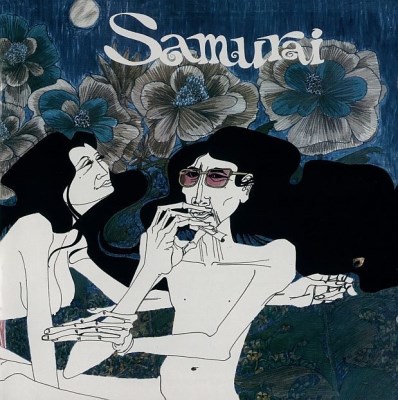 To trace Samurai’s roots, we have to refer to the back catalogue of The Web and more precisely their third album named I Spider. Samurai are nothing else than the line-up of The Web that recorded I Spider since all members of the latter participate in this very album (excluding the saxophonist / flutist Tom Harris) and of course they have nothing to do with their namesakes Samurai of the Japanese Miki Curtis. Rumour has it that the name occurred to Lawson when he was done serving the Japanese army. Samurai was released in 1971 and with regard to its style it blends prog rock, jazz / prog, brass rock and the sound of the Canterbury-related groups. The band honed the material of I Spider into something more succinct, straightforward, groovy and levels of intensity which, at times, are increased. Magnificent wind instruments, superb melodies coupled with the sweet voice of Dave Lawson put together a flawless jewel of the 1970s. The quality of the album is very high indeed and anyone who discovers it finds a life-time companion. Really, how many songs like As I Dried the Tears Away deliver us from the earthly impermanence? What would have happened had Samurai kept going? The die-hard advocates of the 1970s would have an added reason to rave and Dave Greenslade would have no choice but clone Lawson.
To trace Samurai’s roots, we have to refer to the back catalogue of The Web and more precisely their third album named I Spider. Samurai are nothing else than the line-up of The Web that recorded I Spider since all members of the latter participate in this very album (excluding the saxophonist / flutist Tom Harris) and of course they have nothing to do with their namesakes Samurai of the Japanese Miki Curtis. Rumour has it that the name occurred to Lawson when he was done serving the Japanese army. Samurai was released in 1971 and with regard to its style it blends prog rock, jazz / prog, brass rock and the sound of the Canterbury-related groups. The band honed the material of I Spider into something more succinct, straightforward, groovy and levels of intensity which, at times, are increased. Magnificent wind instruments, superb melodies coupled with the sweet voice of Dave Lawson put together a flawless jewel of the 1970s. The quality of the album is very high indeed and anyone who discovers it finds a life-time companion. Really, how many songs like As I Dried the Tears Away deliver us from the earthly impermanence? What would have happened had Samurai kept going? The die-hard advocates of the 1970s would have an added reason to rave and Dave Greenslade would have no choice but clone Lawson.
Still Life – Still Life
[Vertigo, 1971]
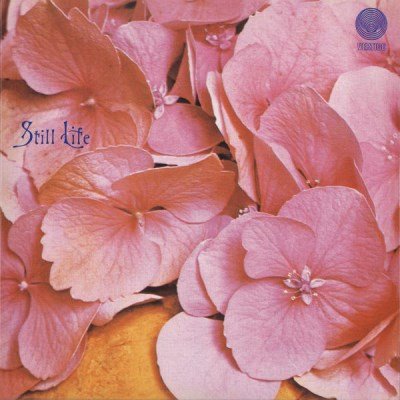
The only album of Still Life is one of the gems that Vertigo gave us in the twilight of the 1970s. The gatefold cover that displays flowers, the back cover portraying a skull, the weird lyrics, the occultism of the early, keyboard-driven progressive rock dismissing the role of the electric guitar (not an unusual setup in the then progressive rock) and the intense gothic classicism built the myth of Still Life. The album was recorded at Nova Sound Studios in London and none of the six songs falls short. On the contrary, the rebellious spirit of the British underground enchants with beautiful vocal melodies and raging keyboards that nod primarily to Uriah Heep and secondly to Arthrur Brown’s Kingdom Come (they toured with them, as they also did with Edgar Broughton Band and Titus Groan).
Although they had signed to Vertigo for six albums, Still Life came to a bitter end leaving us one of the most beautiful British early prog albums as a legacy. Even stranger was the fact that the trace of the four musicians vanished for several years. Terry Howells (keyboards) lives now in Switzerland and he still composes music, Martin Cure (vocals) became a member of Cupid’s Inspiration in 1971, Alan Savage (drums) lives in Northampton and Graham Amos (bass) unfortunately passed away in June of 2003.
Brainchild – Healing of the Lunatic Owl
[A&M Records, 1970]
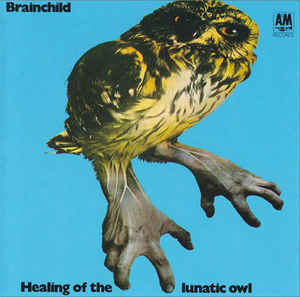 The only famous participant in the only album of the Londoners Brainchild that came out in 1970 through A&M is Lennie Wright of Web and Samurai who also took care of the production. The septet of Brainchild consisted of a typical rock quartet (guitar, keyboards, bass, drums) plus a wind-instrument trio section (saxophone/flute, trumpet, trombone). This fact combined with the historical circumstance of the inauguration of the 70s and the trends in the fermenting underground British scene justifies the peculiar mixture that Brainchild bring forth. Their take of progressive rock / jazz-rock / brass rock was founded on the early Chicago and If and similar bands were Galliard and Warm Dust, with the prog element clearly nodding to Web and Samurai. In the end, the result is simply amazing, diverse and beautifully uneven. The originality of their approach, the impeccable performance and innocence which is poles apart from naivety level up sharply the enjoyment through the style, or even musical genre, changes while the level of the compositions is less than amazing, no less. The paradox of the vintage-as it-gets cover plus the fact that none of the seven members ever played in any other album since the trace of Brainchild vanished add to the myth of one more favourite and unique case of an album which as time goes by sounds all the more an enjoyable vintagee.
The only famous participant in the only album of the Londoners Brainchild that came out in 1970 through A&M is Lennie Wright of Web and Samurai who also took care of the production. The septet of Brainchild consisted of a typical rock quartet (guitar, keyboards, bass, drums) plus a wind-instrument trio section (saxophone/flute, trumpet, trombone). This fact combined with the historical circumstance of the inauguration of the 70s and the trends in the fermenting underground British scene justifies the peculiar mixture that Brainchild bring forth. Their take of progressive rock / jazz-rock / brass rock was founded on the early Chicago and If and similar bands were Galliard and Warm Dust, with the prog element clearly nodding to Web and Samurai. In the end, the result is simply amazing, diverse and beautifully uneven. The originality of their approach, the impeccable performance and innocence which is poles apart from naivety level up sharply the enjoyment through the style, or even musical genre, changes while the level of the compositions is less than amazing, no less. The paradox of the vintage-as it-gets cover plus the fact that none of the seven members ever played in any other album since the trace of Brainchild vanished add to the myth of one more favourite and unique case of an album which as time goes by sounds all the more an enjoyable vintagee.
Nosferatu – Nosferatu
[Vogue Schallplatten, 1970]
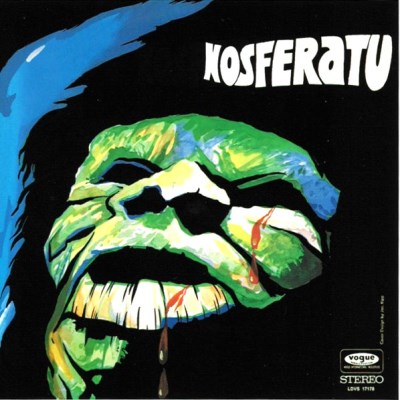 A very typical example of the early German krautrock sound is Nosferatu who mixed in their brew hard guitars with extended solos, jazz approach and trippy, psychedelic atmosphere. Primarily influenced by the British scene and bands like Colosseum, Van Der Graaf Generator and Skin Alley, the Germans recorded one and only album which entitled them to the list of forgotten, but quality acts of the early 70s. The listeners will spot a lot of common ground with other fellow travelers like Xhol Caravan, Out Of Focus and Rufus Zuphall while a basic feature is the variety of the compositions. For instance, the starter Highway, Vanity Fair and jam-like Found My Home represent Nosferatu’s heavier side, the all-out psychedelic No.4 is deeply influenced by Pink Floyd of the 60s whereas Work Day, but most notably Willie the Fox, are the most diverse tunes with elements from jazz, folk and heavy psych and the passionate passages of flute, saxophone and keyboards are dotted all over the place. After they disbanded, the only member that carried on in the music business was the flutist/saxophonist Christian Felke who participated in Move On, the second album of Epsilon which was released in 1972.
A very typical example of the early German krautrock sound is Nosferatu who mixed in their brew hard guitars with extended solos, jazz approach and trippy, psychedelic atmosphere. Primarily influenced by the British scene and bands like Colosseum, Van Der Graaf Generator and Skin Alley, the Germans recorded one and only album which entitled them to the list of forgotten, but quality acts of the early 70s. The listeners will spot a lot of common ground with other fellow travelers like Xhol Caravan, Out Of Focus and Rufus Zuphall while a basic feature is the variety of the compositions. For instance, the starter Highway, Vanity Fair and jam-like Found My Home represent Nosferatu’s heavier side, the all-out psychedelic No.4 is deeply influenced by Pink Floyd of the 60s whereas Work Day, but most notably Willie the Fox, are the most diverse tunes with elements from jazz, folk and heavy psych and the passionate passages of flute, saxophone and keyboards are dotted all over the place. After they disbanded, the only member that carried on in the music business was the flutist/saxophonist Christian Felke who participated in Move On, the second album of Epsilon which was released in 1972.
Gringo – Gringo
[MCA Records, 1971]
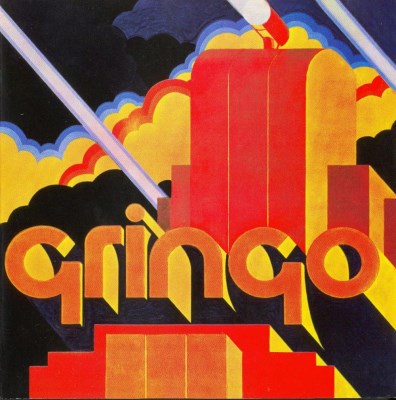
Gringo were formed in 1970 from the ashes of Toast and Utopia and played with Black Widow before they record their sole album. It was released through MCA in the summer of 1971 and then they shared the stage with Caravan and Barclay James Harvest. The self-titled album of Cringo is one of the best examples of the Canterbury prog scene without a trace of jazz and the peculiar, almost androgynous lead vocals of Synge fitting perfectly with those of the rest members. Off this magnificent album, two songs stand out, Cry the Beloved Country and I’m Another Man.
Although plans had been laid for a second album with Jon Hiseman as producer, the band split permanently in the summer of 1972 and the four members followed different paths. Synge (as Casey Synge) sang as a session musician in Leigh Stevens, Pilot, Lou Reed, Mott The Hoople, Cockney Rebel, Marsha Hunt and Maggie Bell, Henry Marsh (guitar, keyboards, vocals) was the founding member of Sailor, Simon Byrne (drums, vocals) released a solo album and John G. Perry (bass, vocals) did important things as a member of Aviator, Caravan, Spreadeagle and Quantum Jump while his debut solo album, the stunning Sunset Wading, is one of the most interesting and prominent records of the Canterbury prog scene.
Brèche – Carapace Et Chair Tendre
[Le Tamanoir, 1979]
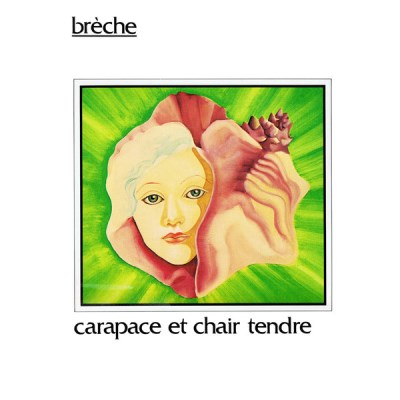 The quartet of Brèche hailing from Brèche of Canada was formed by the brothers Marc (piano, flute, saxophone) and Paul Bolduc (bass, trombone) along with Daniel Roussel (guitar) and Jacques Joubert (violin). Their music is as far as anything from the typical prog folk thing, almost exclusively acoustic (aside the bass), half-way instrumental, replete with melodies, technical playing and, for the most part, choral vocals of all four members that add a bucolic touch to the romantic and at times dramatic themes which are intensified by the absence of percussion and the electric guitar. In the bizarrely entitled Carapace et chair tender (Shell and tender flesh) common elements with Conventum, L’Engoulevent (label-mates of Brèche in Le Tamanoir), Connivence and, naturally, Harmonium are spotted. The complicated textures of the melodies, the tight playing of the quartet and the seminal arrangements –where the choice of the trombone initially surprises and with every listen wins over the listener all the more- rank the album among the hidden gems of the Canadian scene of the 70s and 1979. Excluding Joubert who did a short tenure in Barde, the trace of the rest three were vanished after the sole album of Brèche which up to this day is a gem of the Québec scene.
The quartet of Brèche hailing from Brèche of Canada was formed by the brothers Marc (piano, flute, saxophone) and Paul Bolduc (bass, trombone) along with Daniel Roussel (guitar) and Jacques Joubert (violin). Their music is as far as anything from the typical prog folk thing, almost exclusively acoustic (aside the bass), half-way instrumental, replete with melodies, technical playing and, for the most part, choral vocals of all four members that add a bucolic touch to the romantic and at times dramatic themes which are intensified by the absence of percussion and the electric guitar. In the bizarrely entitled Carapace et chair tender (Shell and tender flesh) common elements with Conventum, L’Engoulevent (label-mates of Brèche in Le Tamanoir), Connivence and, naturally, Harmonium are spotted. The complicated textures of the melodies, the tight playing of the quartet and the seminal arrangements –where the choice of the trombone initially surprises and with every listen wins over the listener all the more- rank the album among the hidden gems of the Canadian scene of the 70s and 1979. Excluding Joubert who did a short tenure in Barde, the trace of the rest three were vanished after the sole album of Brèche which up to this day is a gem of the Québec scene.
Alusa Fallax – Intorno Alla Mia Cattiva Educazione
[Fonit, 1974]
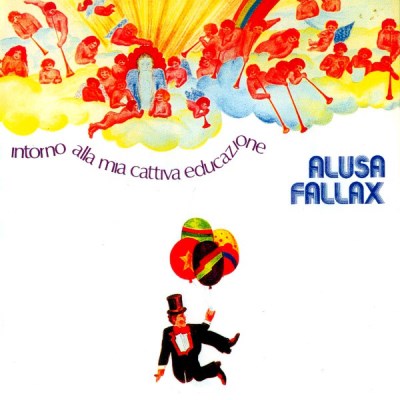 Founded by the guitarist Guido Gabet and the keyboardist Massimo Parretti, Alusa Fallax hailing from Milano rounded out their line-up with the three brothers Augusto, Mario and Guido Cirla (vocals/drums, flute/saxophone, bass respectively) and they released in 1974 the album Intorno Alla Mia Cattiva Educazione. Influenced by symphonic prog in the vein of Genesis and Gentle Giant and, of course, by classical music just like the entire Italian scene, the sole album of Alusa Fallax ranks easily among the most quality and fascinating records of Rock Progressivo Italiano. Peerless technical skills, inspired melodies and constant changes of rhythms and moods give the picture of what the 13 compositions are like which, in some way, are interconnected with a couple of main themes. The spirited voice of Augusto Cirla with its telltale edge impresses and the rest of the band plays at the peak of its abilities throughout the album. Aside symphonic prog that dominates the material, some jazzy prog tunes pop up on side B like E’ Oggi and E’ Cosi Poco Quel Che Conosco which, strangely enough, fit in perfectly. With the fact how well-rounded Intorno sounds, it begs the question why no member participated in any other band, ever again.
Founded by the guitarist Guido Gabet and the keyboardist Massimo Parretti, Alusa Fallax hailing from Milano rounded out their line-up with the three brothers Augusto, Mario and Guido Cirla (vocals/drums, flute/saxophone, bass respectively) and they released in 1974 the album Intorno Alla Mia Cattiva Educazione. Influenced by symphonic prog in the vein of Genesis and Gentle Giant and, of course, by classical music just like the entire Italian scene, the sole album of Alusa Fallax ranks easily among the most quality and fascinating records of Rock Progressivo Italiano. Peerless technical skills, inspired melodies and constant changes of rhythms and moods give the picture of what the 13 compositions are like which, in some way, are interconnected with a couple of main themes. The spirited voice of Augusto Cirla with its telltale edge impresses and the rest of the band plays at the peak of its abilities throughout the album. Aside symphonic prog that dominates the material, some jazzy prog tunes pop up on side B like E’ Oggi and E’ Cosi Poco Quel Che Conosco which, strangely enough, fit in perfectly. With the fact how well-rounded Intorno sounds, it begs the question why no member participated in any other band, ever again.
Quiet Sun – Mainstream
[Island Records, 1975]
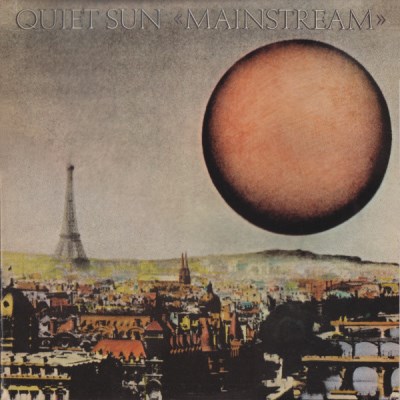
More like a short-lived venture than a regular band, consistent in time, Quiet Sun put out in 1975 one album that is still referred as one of the most important Canterbury albums. Manzanera (guitars, piano, Dave Jarrett (piano, organ, synths), Charles Hayward (percussion, keyboards, vocals) and Bill MacCormick (bass, backing vocals) formed the band back in 1970, only to figure out that things didn’t work and shelved it. Therefore, they tried their luck elsewhere and Manzanera unfolded his talent on the guitar in Roxy Music, Hayward engaged in experimental techniques in the early days of This Heat, MacCormick supplemented Robert Wyatt’s inspirations in Matching Mole and Jarrett turned into teaching mathematics in a college.
Three years later, Manzanera’s initiative and the motivation of recording part of the material which was tested before the split, brought them together. In Mainstream, with the help of Brian Eno (synths, programming) and Ian MacCormick (backing vocals), they concocted a mixture of technical and compositional astuteness. A well-balanced presence of the progressive rock mentality in a jazz/fusion body where the neurotic guitars operate sharply, the lyricism of the keyboards is imprinted melodiously and the co-existence of groovy and lysergic bass with attractively winding drums, shines.
Lagger Blues Machine – Lagger Blues Machine
[CBS, 1972]
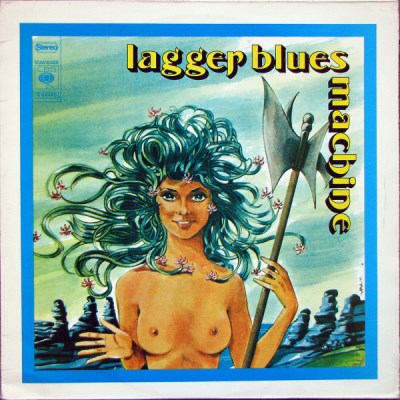
The case of the Belgian Lagger Blues Machine with their declared love for beer has its peculiarities. With Christian and Jean-Luc Duponcheel (keyboards and drums respectively) and Jose Cuisset (guitar), Michel Maes (bass), Carmelo Pilotta (wind) and Vincent Mottouille (keyboards) as members, they were fortunate to open for Wishbone Ash and Warhorse at a shopping mall in Brussels in 1970, and so they earned CBS’s interest in releasing their unique studio album in 1972 which gave them a prominent place in the underground prog pantheon. Their music in the five amazing compositions that constitute the album (three were written by C. Duponcheel and two by Mottouille) doesn’t sound very much like anything released during that time in their country and central Europe in general. Their libertarian progressive rock, grafted effortlessly with heavy psych, jazz-rock and zeuhl-like ritualistic spirit with a dominant jamming spirit fascinates with its explosiveness, inspiration and liveliness.
In 1988 Tanit Live was released, which includes that live appearance in 1970, unfortunately in a very poor sound quality. After they disbanded, Cuisset played in the first album of hard rockers Downtrip, while Christian Duponcheel was a founding member of the legendary psych-prog rockers Dragon (Dragon, 1976).
Titus Groan – Titus Groan
[Dawn, 1970]
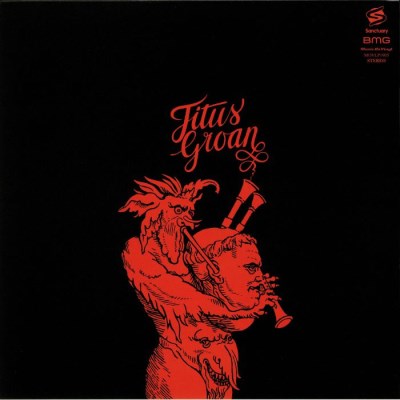 Hailing from the gothic environment of castle Gormenghast by British novelist Mervyn Peake, Titus Groan was formed in 1969, a band that would faithfully serve their vision. The masterminds were Stuart Cowell (vocals, guitars, keyboards) and Tony Priestland (saxophone, flute, oboe), assisted by John Lee (bass, vocals) and Jim Toomey (drums). Apart from the artistic and lyrical strand that would more or less incarnate the literary preferences of Powell and Priestland, Powell’s purpose was not the creation of a band dedicated to the post-psychedelic spirit of that era (bands like The Byrds and Crosby, Stills, Nash and Young). This came up due to the diametrically opposite influences of each individual member. Thus, their music is directly related to progressive rock, encompassing hard rock, jazz, folk, blues and even pop and country influences. 48 years after its release, this multi-edged edifice cannot be demolished and up to this day everything that comes from the grooves of the vinyl impress us. But what would have happened if Titus Groan had continued? The material would probably get little response from the wider audience, and very few of us would still get the goose pimples from every note played by the titan Priestland.
Hailing from the gothic environment of castle Gormenghast by British novelist Mervyn Peake, Titus Groan was formed in 1969, a band that would faithfully serve their vision. The masterminds were Stuart Cowell (vocals, guitars, keyboards) and Tony Priestland (saxophone, flute, oboe), assisted by John Lee (bass, vocals) and Jim Toomey (drums). Apart from the artistic and lyrical strand that would more or less incarnate the literary preferences of Powell and Priestland, Powell’s purpose was not the creation of a band dedicated to the post-psychedelic spirit of that era (bands like The Byrds and Crosby, Stills, Nash and Young). This came up due to the diametrically opposite influences of each individual member. Thus, their music is directly related to progressive rock, encompassing hard rock, jazz, folk, blues and even pop and country influences. 48 years after its release, this multi-edged edifice cannot be demolished and up to this day everything that comes from the grooves of the vinyl impress us. But what would have happened if Titus Groan had continued? The material would probably get little response from the wider audience, and very few of us would still get the goose pimples from every note played by the titan Priestland.
Ardo Dombec – Ardo Dombec
[Pilz, 1971]
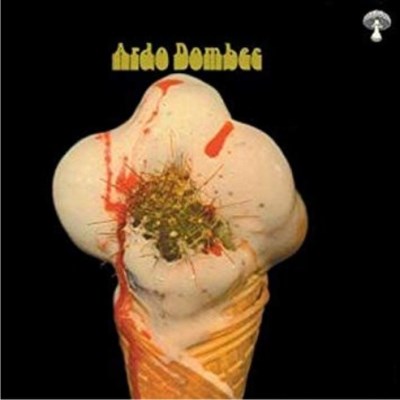
Ardo Dombec was an underground band from Hamburg, Germany formed in the early 70’s which released one album via the legendary Pilz. However, this album sounds more British and emphasizes the saxophone a lot. Its style can be described mostly as funky, groovy, bluesy, heavy progressive jazz-rock. Complex rhythms, virtuoso jazz influences, flute and guitar predominate in their sound. The drums and bass are often very fast and heavy, flirting with fusion.
The band should also be credited for its great sense of humour. First, the inspired album cover represents a cactus in an ice-cream cone that definitely depicts the feeling of the album; something that what may strike as romantic, could also be easily transubstantiated into something “stinging” with “acid” sounds. This is also supported by the cynical and quite dark lyrics. The 8 second track entitled Oh, Sorry on the side B tricks you into believing that the LP was scratched! I suppose that many listeners were shocked the first time they heard it!
To sum it up, this is an album with good compositions which despite their underground nature, they’re memorable. This is not a masterpiece, but a really essential release. It is definitely worth listening to, especially for the heavy and groovy saxophone of Helmut Hachmann’s that dominates the tracks.
Zartong – Zartong
[DOM, 1979]
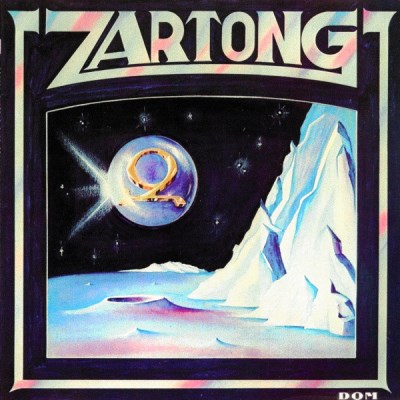 Little is known about the Zartong, an Armenian quartet established in Paris, where they recorded their only album released in 1979. All the originality missing from the cover of Zartong lies in the melodies and music style that is not influenced much by the experimental French rock of that era. The style of Zartong is a mix of progressive rock with folk rock and psych / space rock with synths ranging from Eloy’s symphonic style to the electronic kraut ambience, with a dominant instrumental character and sparse vocals. The deeply underground character (the production “helps” here) and the wonderful combination of Armenian / Turkish traditional music with violin and zither, along with prog, jazzy but also marginally zeuhl and disco elements could have been enough to give us a unique masterpiece. This did not happen, but the mystery of Zartong’s music enchants music lovers even today. If there is a band that sounds a bit like them, it is none other than Asia Minor, who released Crossing Line that same year and they were also settled in Paris. It is unknown whether the two bands had a connection as well as what became of the four members of Zartong.
Little is known about the Zartong, an Armenian quartet established in Paris, where they recorded their only album released in 1979. All the originality missing from the cover of Zartong lies in the melodies and music style that is not influenced much by the experimental French rock of that era. The style of Zartong is a mix of progressive rock with folk rock and psych / space rock with synths ranging from Eloy’s symphonic style to the electronic kraut ambience, with a dominant instrumental character and sparse vocals. The deeply underground character (the production “helps” here) and the wonderful combination of Armenian / Turkish traditional music with violin and zither, along with prog, jazzy but also marginally zeuhl and disco elements could have been enough to give us a unique masterpiece. This did not happen, but the mystery of Zartong’s music enchants music lovers even today. If there is a band that sounds a bit like them, it is none other than Asia Minor, who released Crossing Line that same year and they were also settled in Paris. It is unknown whether the two bands had a connection as well as what became of the four members of Zartong.
De De Lind – Io Non So Da Dove Vengo E Non So Dove Mai Andrò, Uomo È Il Nome Che Mi Han Dato
[Mercury, 1972]
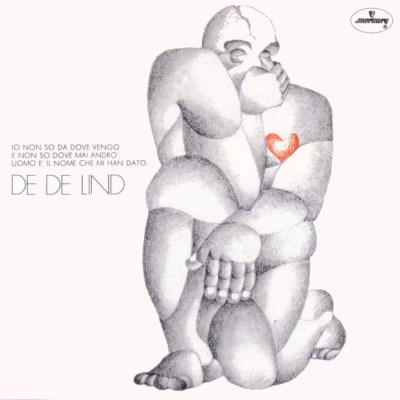
The only album by De De Lind is considered as one of the best Rock Progressivo Italiano samples and of course it also claims the record for the longest album title (I do not know where I come from and I do not know where to go, man is the name I’ve given). They were formed in 1969 in Milan by taking their name after a Playboy model and after three singles mostly in beat style, their full-length album was released by Mercury. Here, the music of the quintet had changed completely. The heavy prog with exceptional prog folk parts that oozes from the first notes of Fuga e Morte until the end of the album, impresses, sounding like a journey -as the title dictates- with vocalist Vito Paradiso on the role of the man-protagonist. The first among equals and highly skilled musicians in De De are probably Matteo Vitolli (guitars, percussion, flute) and Gilberto Trama (winds, keyboards) who masterfully weave the melodies and also offer some very impressive solos.
After the release of the album, the same year De De Lind played at the Rassegna di Musica Popolare in Rome and at the Be-In festival in Naples. Then the band split and except Paradiso who made a short solo career, the subsequent course of the rest of the members remains unknown.
The Battered Ornaments – Mantle–Piece
[Harvest, 1969]

The Battered Ornaments began as the musical vehicle of the poet / lyricist / singer Pete Brown including excellent musicians of the then British jazz-rock scene, such as Chris Spedding (guitar), Nisar Ahmad “George” Khan, Dick Heckstall-Smith (woodwinds) Butch Potter (bass), Rob Tait (drums). After the wonderful A Meal You Can Shake Hands with in the Dark (1969), their leader was sacked, while the remaining members chose to go one stage further in their rejection by replacing Brown’s vocals with those of Spedding. As a result of this radical change, Mantle-Piece was released, the only album by The Battered Ornaments.
The absence of Brown and his distinctive voice is noticeable to the extent that these otherwise remarkable compositions are downplayed. The chemistry and improvisational qualities of the band marginally manage to save the day, but as a singer Spedding does not convince and the album leaves us a strong sense of unfulfilled expectations.
The increasing artistic concerns of each member and the collapse of cohesion led to the disbandment of the Battered Ornaments. Chris Spedding played guitar in several Jack Bruce’s solo albums. Rob Tait played at Vinegar Joe and Pete Brown’s Piblokto! and the rest of the members participated in numerous sessions, some of which are related to the Canterbury scene.
Indian Summer – Indian Summer
[Neon, 1971]
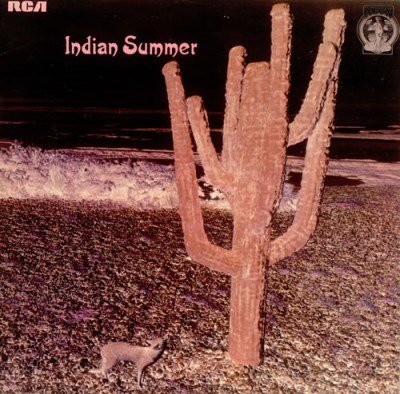 What would you think if you were told that in the late 1960s a quartet was formed in Birmingham, which was supposed to have the same management, producer and equally rich talent as Black Sabbath? The coincidences are numerous and the latter is definitely a bold statement, but when listening to this 1971 album, one finds that it is justified that Indian Summer had the compositional talent and technical skills of a great band. Their heavy prog with plenty of energy that at some points sounds like a live jam with a strong sense of melody and lyricism -where one can find acoustic / quiet parts- was based on the hammond and the charismatic voice of Bob Jackson who had a lush, amazing vibrato and a very characteristic tone in his voice. In several parts, he also colors masterfully the songs with his mellotron. Guitarist’s Colin Williams solos had a jazz / blues background and delivered beautiful melodic ideas, while the rhythm section of Malcolm Harker and Paul Hooper’s is ever-present with intense playing and complex structures. Full of changes, exceptional ideas and intense vocal lines, the eight songs amaze with their variety. Overall, the album is considered as a hidden masterpiece that every lover of the music should be encouraged to experience.
What would you think if you were told that in the late 1960s a quartet was formed in Birmingham, which was supposed to have the same management, producer and equally rich talent as Black Sabbath? The coincidences are numerous and the latter is definitely a bold statement, but when listening to this 1971 album, one finds that it is justified that Indian Summer had the compositional talent and technical skills of a great band. Their heavy prog with plenty of energy that at some points sounds like a live jam with a strong sense of melody and lyricism -where one can find acoustic / quiet parts- was based on the hammond and the charismatic voice of Bob Jackson who had a lush, amazing vibrato and a very characteristic tone in his voice. In several parts, he also colors masterfully the songs with his mellotron. Guitarist’s Colin Williams solos had a jazz / blues background and delivered beautiful melodic ideas, while the rhythm section of Malcolm Harker and Paul Hooper’s is ever-present with intense playing and complex structures. Full of changes, exceptional ideas and intense vocal lines, the eight songs amaze with their variety. Overall, the album is considered as a hidden masterpiece that every lover of the music should be encouraged to experience.
Pan & Regaliz – Pan & Regaliz
[Dimension, 1971]
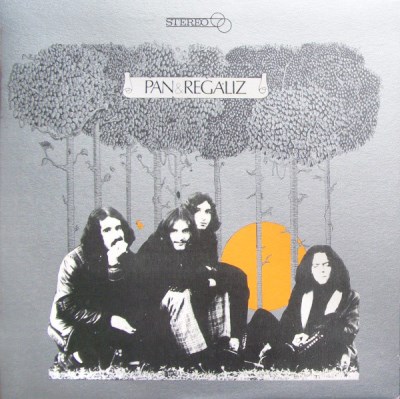
A four-member group from the suburbs of Barcelona (Aqua de Regaliz) who had the chance to release their sole LP in 1971, when Franko’s regime was in its downfall and some sparse elements of cultural flexibility began to appear. The album as a whole is a very powerful mix of Jethro Tull’s first era with plenty of psychedelic jams and an intense Cream influence.
The British influence is apparent from the first listen which is balancing on a voodoo rhythm with the flute and the slow fuzz guitar. Perhaps the vocals are their weak spot, but sure enough the album is full of three-minute psych / acid rock tracks with excellent guitar work. Side B has a darker atmosphere and the two most powerful songs of the album are the 9-minute Today it is Raining where Floyd co-exist with the Frisco sound and the sweetest moment of the album, I Can Fly, a three-minute pure psychedelic gem.
If we think about the historic coincidence and the difficulty to create freely back then in Spain, Pan & Regal’s only record is a great victory and fully justifies the myth that follows it until today. Perhaps one of the most beautiful acid / psych -or proto-prog if you prefer- releases from the very troubled Spain in the early 70s.
Oriental Sunshine – Dedicated To The Bird We Love
[Phillips, 1970]
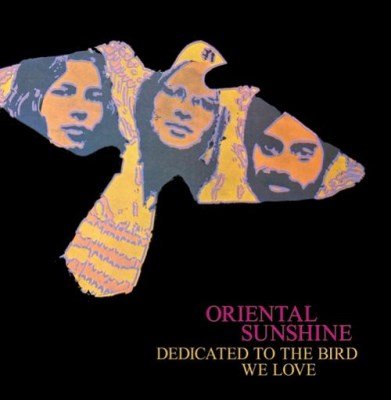 Since the very beginning of the cultural explosion of rock music in the UK and the USA, there was a tendency of some musicians of the time to explore traditional Indian music alongside the spiritual exploration which was being led by Hindu gurus. A more typical example of incorporating Indian culture into western music was of course The Beatles, while bands such as Quintessence dealt almost entirely with this late 60s aspect, the so-called raga rock. In their short-lived career, Oriental Sunshine was the Norwegian addition to those artists. Sitar is a key instrument in their unique album, Dedicated to the Bird We Love. The voice of Nina Johansen lands the listener in the ‘peace and love’ climate of that era. Their psychedelic folk, apart from the obvious Indian element, is strongly based on American psychedelia and particularly the folk side of Jefferson Airplane. A progressive air is also present in the compositions (don’t forget we‘re in the 1970s), contributing to the perfect flow of the album, which otherwise does not differentiate stylistically, and yet in its 30 minutes it is almost flawless. These 30 minutes were the only samples left behind by these Scandinavians, certifying that the 60s music revolution touched almost the entire western world and its culture.
Since the very beginning of the cultural explosion of rock music in the UK and the USA, there was a tendency of some musicians of the time to explore traditional Indian music alongside the spiritual exploration which was being led by Hindu gurus. A more typical example of incorporating Indian culture into western music was of course The Beatles, while bands such as Quintessence dealt almost entirely with this late 60s aspect, the so-called raga rock. In their short-lived career, Oriental Sunshine was the Norwegian addition to those artists. Sitar is a key instrument in their unique album, Dedicated to the Bird We Love. The voice of Nina Johansen lands the listener in the ‘peace and love’ climate of that era. Their psychedelic folk, apart from the obvious Indian element, is strongly based on American psychedelia and particularly the folk side of Jefferson Airplane. A progressive air is also present in the compositions (don’t forget we‘re in the 1970s), contributing to the perfect flow of the album, which otherwise does not differentiate stylistically, and yet in its 30 minutes it is almost flawless. These 30 minutes were the only samples left behind by these Scandinavians, certifying that the 60s music revolution touched almost the entire western world and its culture.
Murphy Blend – First Loss
[Kuckuck, 1970]
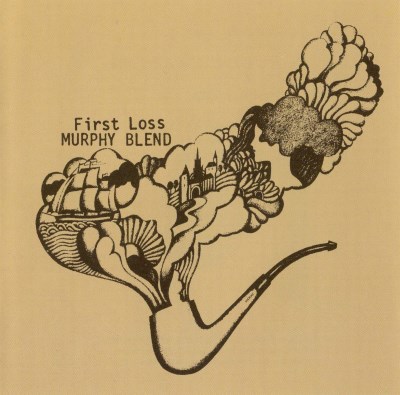
Murphy Blend from Berlin is one of the most mysterious and interesting bands with a single release full-length album from the German 70s rock scene. The band that took its name from a variety of pipe smoke was formed by the leader, composer and keyboardist Wolf-Rüdiger Uhlig. First Loss was recorded in Munich and was the No.5 release of the legendary Kuckuck. Here, the heavy classical progressive rock for which Uhlig was principally in charge of was combined with the hard rock of Heep, Purple, Zeppelin, mainly through the guitar of Wolfgang Rumler and the very dynamic rhythm section of Andreas Scholz (bass) and Achim Schmidt (drums). The album is also memorable for the mediocre vocals with a strong German accent, which however all but discourage any true fan of German prog rock.
After the release of First Loss -which proved to be the first and ultimate loss- Wolf-Rüdiger Uhlig formed Hanuman, who also released one single album in 1971, while Andreas Scholz was a member of Blackwater Park (from whom Opeth’s 2001 album was entitled), who released the classic Dirt Box in 1972. And yes… it was their only album.
Sperrmüll – Sperrmüll
[Brain, 1973]
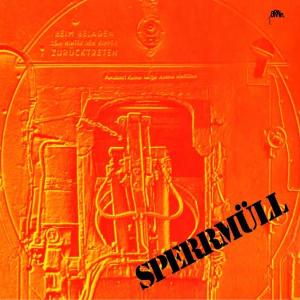
In 1971, Harald Kaiser and Reinhold Breuer decided to form a band under the name Sperrmüll in Aachen, Germany and with the addition of Helmut Krieg (guitar) and Peter Schneider (keyboards) the band became a quartet. Sperrmüll recorded one album at Dierks studio, famous for other krautrock releases. The original LP consists of 6 songs, predominantly heavy rock with many progressive ingredients, mixing heavy organ sounds with long guitar solos into a special psychedelic mix.
The poppy folk rock opener Me and My Girlfriend, driven by the mandolin and the piano and gets heavier in the end, is not representative of the typical krautrock expression compared to the subsequent three songs. No Freak Out, the band’s most famous track, is a progressive excellence that reminds of Pink Floyd and Eloy, with psychedelic elements and organ and guitar jam variations. The spacey Rising Up with its noticeable trippy sounds and the groovy guitar is another typical psych mix. The lengthy epic Right Now has a heavy repeating groovy riff that progresses into improvisational dynamic arrangements of jazzy piano, heavy bass and solo drumming that I personally consider the album’s finest and most innovative song. That riff definitely never got out of my head, for sure.
Sperrmüll is a long time lost krautrock gem delivering dynamic musical variations and harsh rhythms for krautrock lovers (and not only).
Subject Esq. – Subject Esq.
[Epic, 1972]
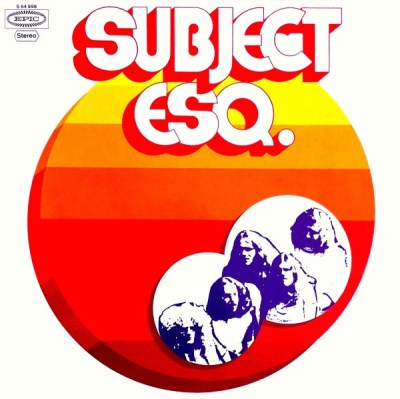 In the early 70s, many German bands sounded pretty much British, with Subject ESQ. from Munich being a typical example. Their self-titled and only album was released in 1972, although the band existed since 1969 under that name and since 1966 as The Subjects. All these years of live experience and musical evolution are clearly depicted in the grooves of the album; an album that makes it very hard to pick up on the German origins of the band members. The six tracks are a very successful blend of the British progressive rock of those days. The successful use of the flute brings Jethro Tull to mind, while influences from Genesis are also obvious. At many points, the music leans towards heavier paths, and a vibrant jazz-rock air blows throughout. Despite the numerous and variant influences, the final result is very concentrated and all the compositions are at top level. Subject ESQ. is one of the many hidden diamonds of the early 70s and is a typical example of their era. The band was then renamed Sahara, releasing the awesome Sunrise and the quite good For All the Clowns, exploring more deeply its symphonic prog side.
In the early 70s, many German bands sounded pretty much British, with Subject ESQ. from Munich being a typical example. Their self-titled and only album was released in 1972, although the band existed since 1969 under that name and since 1966 as The Subjects. All these years of live experience and musical evolution are clearly depicted in the grooves of the album; an album that makes it very hard to pick up on the German origins of the band members. The six tracks are a very successful blend of the British progressive rock of those days. The successful use of the flute brings Jethro Tull to mind, while influences from Genesis are also obvious. At many points, the music leans towards heavier paths, and a vibrant jazz-rock air blows throughout. Despite the numerous and variant influences, the final result is very concentrated and all the compositions are at top level. Subject ESQ. is one of the many hidden diamonds of the early 70s and is a typical example of their era. The band was then renamed Sahara, releasing the awesome Sunrise and the quite good For All the Clowns, exploring more deeply its symphonic prog side.
Panta Rei – Panta Rei
[Harvest, 1973]
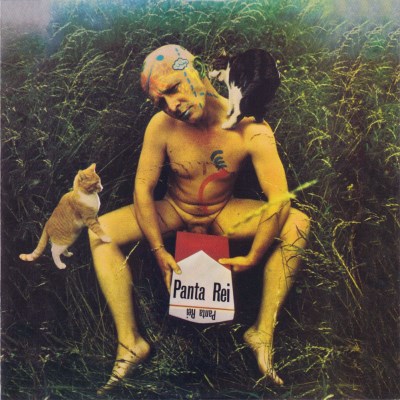
The unique album by Panta Rei from Uppsala is one of the greatest mysteries of Scandinavian 70s rock. The element for which it is mainly known is of course the unexplainable cover that, in addition to being unusual as a concept, is also impossible to interpret. Theoretically, based on this cover art one might expect to hear an extreme psychedelic record. However, the predominant element is progressive rock and especially heavy prog that is combined with intense psychedelic and jazz-rock elements. The tracks of the album are quite different to each other and sound somewhat uneven, but the overall picture can only be positive, with The Knight revealing the whole palette of the skills of the seven-member ensemble and it arguably steals the show. One of the most peculiar elements of the Swedes –which, by the way, was not at all commonplace in the 1970s- was the fact that their line-up featured a guitar twin.
Although the prog style of Panta Rei is reminiscent of several other Scandinavian bands of the time, their sound that featured an intense underground scent and psychedelic-ish fusion is an original artistic proposal which had no further development and the same goes for the career of most members of Panta Rei.
Από τους: Πάρη Γραβουνιώτη, Ντίνα Δέδε, Γιάννη Ζαβραδινό, Δημήτρη Καλτσά, Κώστα Μπάρμπα, Τάσο Ποιμενίδη, Κώστα Ρόκα, Θωμά Σαρακίντση, Παναγιώτη Σταθόπουλο, Νίκο Φιλιππαίο
Μετάφραση: Αλέξανδρος Μαντάς, Δημήτρης Καλτσάς
Πέρα από τη διάρκεια και τη συνέπεια στο χρόνο, όλοι οι μουσικόφιλοι τρέφουμε μια ιδιαίτερη αδυναμία σε καλλιτέχνες και συγκροτήματα που εμφανίστηκαν ως διάττοντες αστέρες, αφήνοντας ελάχιστα αλλά άκρως πειστικά δείγματα των ικανοτήτων τους. Για πολλούς και διαφορετικούς λόγους, που στη σημερινή εποχή είναι δύσκολο να φανταστεί κανείς, οι μπάντες με μία και μόνο full-length κυκλοφορία από το ξεκίνημα του progressive rock στα τέλη των 60s και μέχρι τα τέλη της δεκαετίας του ’70 είναι πολλές και αρκετές από αυτές συγκαταλέγονται μεταξύ των κορυφαίων του ιδιώματος.
Η απόφαση να συγκεντρώσουμε όσο το δυνατό περισσότερες από τις αξιολογότερες κυκλοφορίες και να τις παρουσιάσουμε σε ένα αφιέρωμα έγινε με ενθουσιασμό, αλλά η επιλογή των ονομάτων οδήγησε στη διαπίστωση ότι θα χρειαστούν επτά μέρη, καθώς τα albums που επιλέχτηκαν είναι γύρω στα 160.
Για να διατηρήσουμε μια ομοιομορφία, αυτή τη φορά δεν θα ακολουθήσουμε χρονολογική σειρά. Τα “one-album wonders” θα παρουσιαστούν με τυχαία σειρά και κάθε άρθρο θα είναι ένα αδιάκοπο ταξίδι μπρος και πίσω στο χρόνο, που ελπίζουμε να είναι συναρπαστικό στην ανάγνωση όσο ήταν κάθε κομμάτι στη συγγραφή του.

Fantasy – Fantasy
[Liberty, 1970]
 Οι Αμερικανοί Fantasy, αν και δεν αντέχουν στη σύγκριση με το βρετανικό σχήμα με το ίδιο όνομα, αποτελούν μία χαρακτηριστική και αγαπημένη περίπτωση της οριακά μεταψυχεδελικής ροκ περιόδου στις Η.Π.Α. Σχηματίστηκαν το 1967 στο Miami και η καλή φήμη τους ως live σχήμα τους έδωσε την ευκαιρία να ανοίξουν για τους Led Zeppelin, Frank Zappa και Steppenwolf. Αν και η επιτυχία ήταν πλέον αναμενόμενη, ο τραγουδιστής της μπάντας, Billy Robbins, εξαφανίστηκε ξαφνικά και αργότερα βρέθηκε νεκρός. Τη θέση του πίσω από το μικρόφωνο πήρε ένα 16χρονο κορίτσι, η Lydia Miller, με πολύ δυναμική φωνή που λάμπει στον υπέροχο και μοναδικό δίσκο της μπάντας που κυκλοφόρησε το 1970 από την Liberty.
Οι Αμερικανοί Fantasy, αν και δεν αντέχουν στη σύγκριση με το βρετανικό σχήμα με το ίδιο όνομα, αποτελούν μία χαρακτηριστική και αγαπημένη περίπτωση της οριακά μεταψυχεδελικής ροκ περιόδου στις Η.Π.Α. Σχηματίστηκαν το 1967 στο Miami και η καλή φήμη τους ως live σχήμα τους έδωσε την ευκαιρία να ανοίξουν για τους Led Zeppelin, Frank Zappa και Steppenwolf. Αν και η επιτυχία ήταν πλέον αναμενόμενη, ο τραγουδιστής της μπάντας, Billy Robbins, εξαφανίστηκε ξαφνικά και αργότερα βρέθηκε νεκρός. Τη θέση του πίσω από το μικρόφωνο πήρε ένα 16χρονο κορίτσι, η Lydia Miller, με πολύ δυναμική φωνή που λάμπει στον υπέροχο και μοναδικό δίσκο της μπάντας που κυκλοφόρησε το 1970 από την Liberty.
Το στυλ των Fantasy είναι μία μίξη σκληρού ψυχεδελικού ροκ με αρκετά πομπώδες ύφος, έντονα στοιχεία πρώιμου progressive rock και το χαρακτηριστικό χρώμα του West Coast ήχου με τον δυναμικό και ταυτόχρονα ρομαντικό, ενίοτε περιπετειώδη χαρακτήρα, ο οποίος εδώ επιφυλάσσει αρκετές εκπλήξεις. Η μετάβαση στη νέα δεκαετία βρήκε τους Fantasy πιο έτοιμους από άλλα σχήματα για τις προκλήσεις για πιο τεχνική και δαιδαλώδη μουσική, αλλά η επιτυχία δεν ήρθε ποτέ, εκτός από τη ραδιοφωνική απήχηση του instumental Stoned Cowboy. Μετά τη διάλυσή τους συνέχισαν ως Year One χωρίς την Miller που συνέχισε ως solo καλλιτέχνιδα. Δυστυχώς πέθανε στα 55 της χρόνια το 2008.
Cruciferius – A Nice Way of Life
[Egg, 1970]
 Στις αρχές της δεκαετίας του ’70 η γαλλική σκηνή ήταν μία από τις πιο ανερχόμενες και ρηξικέλευθες της Ευρώπης. Το A Nice Way οf Life, το μοναδικό album των Cruciferius, αποτελεί ένα σημαντικό κομμάτι της που μέσα από το σχετικά άγουρο στυλ του αποτελεί προπομπό για τα όσα όμορφα ακολούθησαν εντός Γαλλίας. Jazz αισθητική, heavy psych κιθάρες και ένα γενικότερο proto-prog ύφος χαρακτηρίζουν ολόκληρο τον δίσκο, με την πρώτη πλευρά να είναι αισθητά καλύτερη με κομμάτια όπως το εναρκτήριο Big Bird και το Let’s Try. Μεγάλο ατού των Cruciferius είναι το εξαιρετικό rhythm section των Bernard Paganotti / Patrick Jean, με τον πρώτο μάλιστα να είναι ιδιαίτερα γνωστός στους φίλους των Magma από τη συμμετοχή του στα Live/Hai και Üdü Ẁüdü. Στα αρνητικά η πολύ μέτρια προφορά της αγγλικής καθώς και το μάλλον ατυχές Annabel Lee που κλείνει έναν δίσκο που ούτως ή άλλως δεν μπορεί να χαρακτηριστεί αριστούργημα, αλλά εμπεριέχει πολλές εξαιρετικές ιδέες που χαρακτηρίζουν την εποχή στην οποία κυκλοφόρησε. Ο Paganotti συμμετείχε πέραν των Magma στον εξαιρετικό, μοναδικό δίσκο των Weidorje και στο προσωπικό του σχήμα Paga Group, ο Jean εμφανίστηκε σε δύο προσωπικούς δίσκους του Ντέμη Ρούσσου, ενώ οι Francois Breant και Marc Perru πέραν της προσωπικής καριέρας του πρώτου, συνυπήρξαν στους δύο δίσκους των prog rockers Nemo.
Στις αρχές της δεκαετίας του ’70 η γαλλική σκηνή ήταν μία από τις πιο ανερχόμενες και ρηξικέλευθες της Ευρώπης. Το A Nice Way οf Life, το μοναδικό album των Cruciferius, αποτελεί ένα σημαντικό κομμάτι της που μέσα από το σχετικά άγουρο στυλ του αποτελεί προπομπό για τα όσα όμορφα ακολούθησαν εντός Γαλλίας. Jazz αισθητική, heavy psych κιθάρες και ένα γενικότερο proto-prog ύφος χαρακτηρίζουν ολόκληρο τον δίσκο, με την πρώτη πλευρά να είναι αισθητά καλύτερη με κομμάτια όπως το εναρκτήριο Big Bird και το Let’s Try. Μεγάλο ατού των Cruciferius είναι το εξαιρετικό rhythm section των Bernard Paganotti / Patrick Jean, με τον πρώτο μάλιστα να είναι ιδιαίτερα γνωστός στους φίλους των Magma από τη συμμετοχή του στα Live/Hai και Üdü Ẁüdü. Στα αρνητικά η πολύ μέτρια προφορά της αγγλικής καθώς και το μάλλον ατυχές Annabel Lee που κλείνει έναν δίσκο που ούτως ή άλλως δεν μπορεί να χαρακτηριστεί αριστούργημα, αλλά εμπεριέχει πολλές εξαιρετικές ιδέες που χαρακτηρίζουν την εποχή στην οποία κυκλοφόρησε. Ο Paganotti συμμετείχε πέραν των Magma στον εξαιρετικό, μοναδικό δίσκο των Weidorje και στο προσωπικό του σχήμα Paga Group, ο Jean εμφανίστηκε σε δύο προσωπικούς δίσκους του Ντέμη Ρούσσου, ενώ οι Francois Breant και Marc Perru πέραν της προσωπικής καριέρας του πρώτου, συνυπήρξαν στους δύο δίσκους των prog rockers Nemo.
Sergius Golowin – Lord Krishna Von Goloka
[Die Kosmischen Kuriere, 1973]
 Το άλμπουμ αυτό, που κατατάσσεται στην κατηγορία της ιδιαίτερης, ακόμα και παράδοξης μουσικής έκφρασης, κυκλοφόρησε το 1973 από την δισκογραφική Die Kosmischen Kuriere του Rolf-Ulrich Kaiser. Τον Kaiser ακόμα εμπιστεύονταν μερικοί από τους καλύτερους νέους μουσικούς του γερμανικού underground, όπως ο Klaus Schulze, το ψυχεδελικό folk ντουέτο των Bernd Witthüser & Walter Westrupp, καθώς και οι Jerry Berkers και Jürgen Dollase των Wallenstein. Τους προσκάλεσε, λοιπόν, στο στούντιο ξανά για να παρέχουν το μουσικό υπόβαθρο για τις απαγγελίες του Ελβετού συγγραφέα και εκδότη Sergius Golowin, πάνω στα ινδουιστικά του διδάγματα. Ο Golowin ήταν μία από εκείνες της περίεργες μορφές που ανέδειξε η χίπικη αντικουλτούρα˙μελετητής των λαϊκών δοξασιών και του εσωτερισμού, συνεργάτης του Timothy Leary και ζωγραφισμένος από τον H.R. Ciger.
Το άλμπουμ αυτό, που κατατάσσεται στην κατηγορία της ιδιαίτερης, ακόμα και παράδοξης μουσικής έκφρασης, κυκλοφόρησε το 1973 από την δισκογραφική Die Kosmischen Kuriere του Rolf-Ulrich Kaiser. Τον Kaiser ακόμα εμπιστεύονταν μερικοί από τους καλύτερους νέους μουσικούς του γερμανικού underground, όπως ο Klaus Schulze, το ψυχεδελικό folk ντουέτο των Bernd Witthüser & Walter Westrupp, καθώς και οι Jerry Berkers και Jürgen Dollase των Wallenstein. Τους προσκάλεσε, λοιπόν, στο στούντιο ξανά για να παρέχουν το μουσικό υπόβαθρο για τις απαγγελίες του Ελβετού συγγραφέα και εκδότη Sergius Golowin, πάνω στα ινδουιστικά του διδάγματα. Ο Golowin ήταν μία από εκείνες της περίεργες μορφές που ανέδειξε η χίπικη αντικουλτούρα˙μελετητής των λαϊκών δοξασιών και του εσωτερισμού, συνεργάτης του Timothy Leary και ζωγραφισμένος από τον H.R. Ciger.
Σε μία αχλή ελεύθερου αυτοσχεδιασμού και μυστικιστικής παραζάλης αυτό το άτυπο γκρουπ ηχογράφησε τρεις μακρόπνοες συνθέσεις στις οποίες συνδυάζονται το acid folk, το proto-ambient, ο avant-garde ιμπρεσιονισμός και επιρροές από την ινδική παράδοση. Το έντονα πειραματικό, προκλητικά ψυχεδελικό και αλλόκοτα μελωδικό αποτέλεσμα ίσως σε πολλούς φανεί κάπως δύσβατο. Ωστόσο, το Lord Krishna Von Goloka αποτελεί ένα καταπληκτικό ντοκουμέντο της πρώτης, ασυμβίβαστης και πρώιμα ώριμης φάσης του krautrock και απευθύνεται σε μια από τις πιο δυσπρόσιτες πλευρές της ανθρώπινης ύπαρξης: τον μεταφυσικό αγώνα προς μία συμπόρευση με τον συχνά ερμητικό φυσικό κόσμο και τελικά με το σύμπαν.
Delivery – Fools Meeting
[B & C Records, 1970]
 Δημιουργήθηκαν το 1966 από τις στάχτες των Βruno’s Βand από τους αδερφούς Miller (Phill: κιθάρα, Steve: πλήκτρα) και Pip Pyle (τύμπανα). Η σύνθεση σταθεροποιήθηκε με τις προσθήκες των Lol Coxhill (πνευστά), Carol Grimes (φωνητικά) και Roy Babbington (μπάσο). Στην κυκλοφορία τoυ μοναδικού δίσκου τους Fools Meeting οι blues καταβολές έχουν υποχωρήσει αισθητά δίνοντας χώρο σε πιο jazz κατευθύνσεις. H Grimes δικαιολογεί (έως ενός σημείου) την φήμη της ως «Grace Slick της Αγγλίας» με την δυναμική και ψυχωμένη της ερμηνεία. Συνθέσεις που ξεχωρίζουν είναι τα Blinded to Your Light, Miserable Man καθώς και η εκπληκτική διασκευή του It is Really the Same (του Keith Jarrett). Mετά τη διάλυσή τους, η Grimes ακολούθησε προσωπική καριέρα σε πιο blues / jazz / soul κατευθύνσεις. O επόμενος σταθμός του Pip Pyle ήταν οι Gong (Camembert Electrique), ενώ οι αδερφοί Miller και ο Coxhill θα συμμετάσχουν στα sessions του Waterloo Lilly και ο Phill Miller στους δύο δίσκους των Matching Mole. Τότε έγινε μια απόπειρα επανασύνδεσης των Delivery (χωρίς την Grimes) από τους αδελφούς Miller, Richard Sinclair και Pip Pyle με σποραδικές εμφανίσεις και κάποιες δοκιμαστικές ηχογραφήσεις. Ο Steve Miller θα αποχωρήσει δίνοντας την σκυτάλη στον Dave Sinclair κι αυτός με τη σειρά του στον Dave Stewart σηματοδοτώντας έτσι το τέλος των Delivery και την αρχή των Hatfield and the North. Αυτά όμως είναι (μια άλλη) ιστορία…
Δημιουργήθηκαν το 1966 από τις στάχτες των Βruno’s Βand από τους αδερφούς Miller (Phill: κιθάρα, Steve: πλήκτρα) και Pip Pyle (τύμπανα). Η σύνθεση σταθεροποιήθηκε με τις προσθήκες των Lol Coxhill (πνευστά), Carol Grimes (φωνητικά) και Roy Babbington (μπάσο). Στην κυκλοφορία τoυ μοναδικού δίσκου τους Fools Meeting οι blues καταβολές έχουν υποχωρήσει αισθητά δίνοντας χώρο σε πιο jazz κατευθύνσεις. H Grimes δικαιολογεί (έως ενός σημείου) την φήμη της ως «Grace Slick της Αγγλίας» με την δυναμική και ψυχωμένη της ερμηνεία. Συνθέσεις που ξεχωρίζουν είναι τα Blinded to Your Light, Miserable Man καθώς και η εκπληκτική διασκευή του It is Really the Same (του Keith Jarrett). Mετά τη διάλυσή τους, η Grimes ακολούθησε προσωπική καριέρα σε πιο blues / jazz / soul κατευθύνσεις. O επόμενος σταθμός του Pip Pyle ήταν οι Gong (Camembert Electrique), ενώ οι αδερφοί Miller και ο Coxhill θα συμμετάσχουν στα sessions του Waterloo Lilly και ο Phill Miller στους δύο δίσκους των Matching Mole. Τότε έγινε μια απόπειρα επανασύνδεσης των Delivery (χωρίς την Grimes) από τους αδελφούς Miller, Richard Sinclair και Pip Pyle με σποραδικές εμφανίσεις και κάποιες δοκιμαστικές ηχογραφήσεις. Ο Steve Miller θα αποχωρήσει δίνοντας την σκυτάλη στον Dave Sinclair κι αυτός με τη σειρά του στον Dave Stewart σηματοδοτώντας έτσι το τέλος των Delivery και την αρχή των Hatfield and the North. Αυτά όμως είναι (μια άλλη) ιστορία…
Cargo – Cargo
[Harvest, 1972]
 Όταν κάποιος φίλος με ρωτάει να του προτείνω κάποιον obscure prog 70s δίσκο που να είναι τέρμα heavy και κιθαριστικός, οι Cargo είναι σίγουρα μέσα στις πρώτες 2-3 σκέψεις που θα κάνω. Οι Ολλανδοί αποτελούν ακόμα μία μπάντα που κυκλοφόρησαν έναν και μόνο δίσκο και μετά χάθηκαν στη λήθη του χρόνου. Αποτελούμενοι από τα αδέρφια De Hont στις κιθάρες, τον Wim De Vries σε φωνητικά και μπάσο και τον Βρετανό Dennis Whitbread, πρώην drummer των prog rockers Ekseption, οι Cargo μέσα από το ομώνυμο album τους επιδίδονται σε ένα άνευ προηγουμένου διπλό κιθαριστικό όργιο, είτε όταν jam-άρουν, riff-άρουν ή σολάρουν. Το εναρκτήριο δεκάλεπτο Sail Inside σε αρπάζει από τον λαιμό με τις εναλλαγές ρυθμών και τον καταιγισμό ιδεών και μελωδιών, ενώ η γρετζάτη φωνή του De Vries πάει γάντι με το στυλ τους. Στο τζαμαριστό Cross Talking που ακολουθεί οι κιθάρες παίρνουν φωτιά σε μία σύνθεση που δεν έχει να ζηλέψει τίποτα απολύτως από τους Wishbone Ash. Το funky Finding Out χωρίς να μειώνει στο παραμικρό την αξία του το επακόλουθο σχόλιο, αποτελεί μια μικρή ανάσα για το τελειωτικό χτύπημα του Summerfair, ένα 17λεπτο έπος που αποδεικνύει το μουσικό τους ταλέντο και σου δημιουργεί την απορία τι θα μπορούσαν να κυκλοφορήσουν εάν συνέχιζαν. Δεκάρι ακατέβατο.
Όταν κάποιος φίλος με ρωτάει να του προτείνω κάποιον obscure prog 70s δίσκο που να είναι τέρμα heavy και κιθαριστικός, οι Cargo είναι σίγουρα μέσα στις πρώτες 2-3 σκέψεις που θα κάνω. Οι Ολλανδοί αποτελούν ακόμα μία μπάντα που κυκλοφόρησαν έναν και μόνο δίσκο και μετά χάθηκαν στη λήθη του χρόνου. Αποτελούμενοι από τα αδέρφια De Hont στις κιθάρες, τον Wim De Vries σε φωνητικά και μπάσο και τον Βρετανό Dennis Whitbread, πρώην drummer των prog rockers Ekseption, οι Cargo μέσα από το ομώνυμο album τους επιδίδονται σε ένα άνευ προηγουμένου διπλό κιθαριστικό όργιο, είτε όταν jam-άρουν, riff-άρουν ή σολάρουν. Το εναρκτήριο δεκάλεπτο Sail Inside σε αρπάζει από τον λαιμό με τις εναλλαγές ρυθμών και τον καταιγισμό ιδεών και μελωδιών, ενώ η γρετζάτη φωνή του De Vries πάει γάντι με το στυλ τους. Στο τζαμαριστό Cross Talking που ακολουθεί οι κιθάρες παίρνουν φωτιά σε μία σύνθεση που δεν έχει να ζηλέψει τίποτα απολύτως από τους Wishbone Ash. Το funky Finding Out χωρίς να μειώνει στο παραμικρό την αξία του το επακόλουθο σχόλιο, αποτελεί μια μικρή ανάσα για το τελειωτικό χτύπημα του Summerfair, ένα 17λεπτο έπος που αποδεικνύει το μουσικό τους ταλέντο και σου δημιουργεί την απορία τι θα μπορούσαν να κυκλοφορήσουν εάν συνέχιζαν. Δεκάρι ακατέβατο.
Samurai – Samurai
[Greenwich Gramophone Company, 1971]
 Για να αναζητήσουμε τις ρίζες των Samurai, θα πρέπει να ανατρέξουμε στη δισκογραφική πορεία των The Web και επί της ουσίας στο τρίτου τους album I Spider. Κατ’ ακρίβεια, οι Samurai λογίζονται ως προέκταση των The Web του I Spider καθώς συμμετέχουν όλoι οι συντελεστές του συγκεκριμένου album (εκτός του σαξοφωνίστα και φλαουτίστα Tom Harris) και φυσικά ουδεμία σχέση έχουν με τους έτερους Samurai του Ιάπωνα Miki Curtis. Φημολογείται ότι ο Lawson εμπνεύστηκε το όνομα της μπάντας ορμώμενος από τη θητεία του για κάποιο διάστημα στον Ιαπωνικό στρατό. Το Samurai κυκλοφόρησε το 1971 και ως προς το ύφος συμμειγνύει το prog rock, το jazz / prog, το brass rock και τον ήχο των Canterbury related συγκροτημάτων. Η μπάντα σμίλευσε το υλικό του I Spider και το μετέτρεψε σε κάτι πιο συνοπτικό, πιο άμεσο, με groove και ένταση που σε σημεία είναι πιο αυξημένη. Θεσπέσια πνευστά, απαράμιλλες μελωδίες και ένας ηδυμελής Dave Lawson συνθέτουν ένα αψεγάδιαστο κόσμημα των ’70s. Ποιοτικά ο δίσκoς αγγίζει πολύ υψηλές στάθμες και αποτελεί σύντροφο ζωής από την ανακάλυψή του και εφεξής. Άραγε, πόσα As I Dried the Tears Away μας λυτρώνουν σήμερα από την επίγεια παροδικότητα; Τι θα γινόταν αν οι Samurai είχαν συνεχίσει; Οι αφοσιωμένοι θιασώτες των ’70s θα είχαν έναν ακόμη λόγο να παραληρούν και ο Dave Greenslade θα αναγκαζόταν να κλωνοποιήσει τον Lawson.
Για να αναζητήσουμε τις ρίζες των Samurai, θα πρέπει να ανατρέξουμε στη δισκογραφική πορεία των The Web και επί της ουσίας στο τρίτου τους album I Spider. Κατ’ ακρίβεια, οι Samurai λογίζονται ως προέκταση των The Web του I Spider καθώς συμμετέχουν όλoι οι συντελεστές του συγκεκριμένου album (εκτός του σαξοφωνίστα και φλαουτίστα Tom Harris) και φυσικά ουδεμία σχέση έχουν με τους έτερους Samurai του Ιάπωνα Miki Curtis. Φημολογείται ότι ο Lawson εμπνεύστηκε το όνομα της μπάντας ορμώμενος από τη θητεία του για κάποιο διάστημα στον Ιαπωνικό στρατό. Το Samurai κυκλοφόρησε το 1971 και ως προς το ύφος συμμειγνύει το prog rock, το jazz / prog, το brass rock και τον ήχο των Canterbury related συγκροτημάτων. Η μπάντα σμίλευσε το υλικό του I Spider και το μετέτρεψε σε κάτι πιο συνοπτικό, πιο άμεσο, με groove και ένταση που σε σημεία είναι πιο αυξημένη. Θεσπέσια πνευστά, απαράμιλλες μελωδίες και ένας ηδυμελής Dave Lawson συνθέτουν ένα αψεγάδιαστο κόσμημα των ’70s. Ποιοτικά ο δίσκoς αγγίζει πολύ υψηλές στάθμες και αποτελεί σύντροφο ζωής από την ανακάλυψή του και εφεξής. Άραγε, πόσα As I Dried the Tears Away μας λυτρώνουν σήμερα από την επίγεια παροδικότητα; Τι θα γινόταν αν οι Samurai είχαν συνεχίσει; Οι αφοσιωμένοι θιασώτες των ’70s θα είχαν έναν ακόμη λόγο να παραληρούν και ο Dave Greenslade θα αναγκαζόταν να κλωνοποιήσει τον Lawson.
Still Life – Still Life
[Vertigo, 1971]
 O μοναδικός δίσκος των Still Life είναι ένα από τα διαμάντια που μας χάρισε η Vertigo στο λυκαυγές των 70s. Το gatefold εξώφυλλο με τα λουλούδια και το κρανίο στο οπισθόφυλλο, οι αρκετά περίεργοι στίχοι και η μυστηριακότητα του keyboard-driven πρώιμου progressive rock τους με την απουσία ηλεκτρικής κιθάρας (που δεν ήταν ασυνήθιστο φαινόμενο στο progressive rock τότε) και τον έντονο γοτθικό κλασσικισμό προσθέτουν σημαντικά στον μύθο των Still Life. Το album ηχογραφήθηκε στα Nova Sound Studios στο Λονδίνο και μεταξύ των έξι κομματιών του δίσκου δεν υπάρχει κανένα που υστερεί. Τουναντίον, το επαναστατικό πνεύμα του βρετανικού underground μαγεύει, με υπέροχες φωνητικές μελωδίες και οργιώδη πλήκτρα που παραπέμπουν πρωτίστως στους Uriah Heep και δευτερευόντως στους Arthrur Brown’s Kingdom Come (με τους οποίους περιόδευαν, όπως και με τους Edgar Broughton Band και Titus Groan).
O μοναδικός δίσκος των Still Life είναι ένα από τα διαμάντια που μας χάρισε η Vertigo στο λυκαυγές των 70s. Το gatefold εξώφυλλο με τα λουλούδια και το κρανίο στο οπισθόφυλλο, οι αρκετά περίεργοι στίχοι και η μυστηριακότητα του keyboard-driven πρώιμου progressive rock τους με την απουσία ηλεκτρικής κιθάρας (που δεν ήταν ασυνήθιστο φαινόμενο στο progressive rock τότε) και τον έντονο γοτθικό κλασσικισμό προσθέτουν σημαντικά στον μύθο των Still Life. Το album ηχογραφήθηκε στα Nova Sound Studios στο Λονδίνο και μεταξύ των έξι κομματιών του δίσκου δεν υπάρχει κανένα που υστερεί. Τουναντίον, το επαναστατικό πνεύμα του βρετανικού underground μαγεύει, με υπέροχες φωνητικές μελωδίες και οργιώδη πλήκτρα που παραπέμπουν πρωτίστως στους Uriah Heep και δευτερευόντως στους Arthrur Brown’s Kingdom Come (με τους οποίους περιόδευαν, όπως και με τους Edgar Broughton Band και Titus Groan).
Αν και το συμβόλαιο με την Vertigo ήταν για έξι albums, οι Still Life διαλύθηκαν άδοξα αφήνοντάς μας έναν από τους ομορφότερους βρετανικούς early prog δίσκους. Το ακόμα πιο μυστηριώδες είναι τα ίχνη των τεσσάρων χάθηκαν για αρκετά χρόνια. Ο Terry Howells (πλήκτρα) σήμερα ζει στην Ελβετία και γράφει ακόμα μουσική, ο Martin Cure (φωνητικά) έγινε μέλος των Cupid’s Inspiration το 1971, ο Alan Savage (ντραμς) ζει στο Northampton, ενώ ο Graham Amos (μπάσο) δυστυχώς πέθανε τον Ιούνιο του 2003.
Brainchild – Healing of the Lunatic Owl
[A&M Records, 1970]
 O μόνος γνωστός συμμετέχων στο μοναδικό album των Λονδρέζων Brainchild που κυκλοφόρησε το 1970 από την A&M ήταν ο Lennie Wright των Web και Samurai, ο οποίος ανέλαβε την παραγωγή. Το σεπτέτο των Brainchild αποτελούνταν από ένα τυπικό rock κουαρτέτο (κιθάρα, πλήκτρα, μπάσο, ντραμς) συν το τριμελές τμήμα των πνευστών (σαξόφωνο / φλάουτο, τρομπέτα, τρομπόνι). Αυτό, σε συνδυασμό με την ιστορική συγκυρία της εκκίνησης της δεκαετίας του ’70 και τις τάσεις στον αναβράζοντα underground βρετανικό χώρο δικαιολογεί το ιδιόμορφο μουσικό μείγμα των Brainchild. Το progressive rock / jazz-rock / brass rock τους βασιζόταν κυρίως στους πρώιμους Chicago και If και αντίστοιχα σχήματα ηχητικά ήταν οι Galliard και Warm Dust, με το prog στοιχείο να παραπέμπει στους Web και Samurai. Το αποτέλεσμα τελικά είναι μοναδικό, ποικίλο και όμορφα άνισο. Η γνησιότητα της προσέγγισης, η εκτελεστική δεινότητα και η αθωότητα που απέχει παρασάγγας από την αφέλεια ανεβάζουν κατακόρυφα την απόλαυση της ακρόασης μέσα από εναλλαγές ύφους ή και μουσικού είδους κι αυτό χωρίς το συνθετικό επίπεδο να καταπλήσσει. Η παραδοξότητα του κλασσικότατου εξώφυλλου και το γεγονός πως κανένα από τα επτά μέλη δεν έπαιξε ποτέ ξανά σε κανέναν άλλο δίσκο μετά την εξαφάνιση των ιχνών των Brainchild, προσθέτουν στον μύθο μιας ακόμα αγαπημένης και μοναδικής περίπτωσης δίσκου που όσο περνούν τα χρόνια ακούγεται ως όλο και πιο απολαυστικό vintage.
O μόνος γνωστός συμμετέχων στο μοναδικό album των Λονδρέζων Brainchild που κυκλοφόρησε το 1970 από την A&M ήταν ο Lennie Wright των Web και Samurai, ο οποίος ανέλαβε την παραγωγή. Το σεπτέτο των Brainchild αποτελούνταν από ένα τυπικό rock κουαρτέτο (κιθάρα, πλήκτρα, μπάσο, ντραμς) συν το τριμελές τμήμα των πνευστών (σαξόφωνο / φλάουτο, τρομπέτα, τρομπόνι). Αυτό, σε συνδυασμό με την ιστορική συγκυρία της εκκίνησης της δεκαετίας του ’70 και τις τάσεις στον αναβράζοντα underground βρετανικό χώρο δικαιολογεί το ιδιόμορφο μουσικό μείγμα των Brainchild. Το progressive rock / jazz-rock / brass rock τους βασιζόταν κυρίως στους πρώιμους Chicago και If και αντίστοιχα σχήματα ηχητικά ήταν οι Galliard και Warm Dust, με το prog στοιχείο να παραπέμπει στους Web και Samurai. Το αποτέλεσμα τελικά είναι μοναδικό, ποικίλο και όμορφα άνισο. Η γνησιότητα της προσέγγισης, η εκτελεστική δεινότητα και η αθωότητα που απέχει παρασάγγας από την αφέλεια ανεβάζουν κατακόρυφα την απόλαυση της ακρόασης μέσα από εναλλαγές ύφους ή και μουσικού είδους κι αυτό χωρίς το συνθετικό επίπεδο να καταπλήσσει. Η παραδοξότητα του κλασσικότατου εξώφυλλου και το γεγονός πως κανένα από τα επτά μέλη δεν έπαιξε ποτέ ξανά σε κανέναν άλλο δίσκο μετά την εξαφάνιση των ιχνών των Brainchild, προσθέτουν στον μύθο μιας ακόμα αγαπημένης και μοναδικής περίπτωσης δίσκου που όσο περνούν τα χρόνια ακούγεται ως όλο και πιο απολαυστικό vintage.
Nosferatu – Nosferatu
[Vogue Schallplatten, 1970]
 Κλασσικότατο παράδειγμα του πρώιμου krautrock ήχου, οι Nosferatu συνδύασαν στο χαρμάνι τους σκληρές κιθάρες με εκτενή solos, jazz τεχνοτροπία και trippy, ψυχεδεδικές ατμόσφαιρες. Επηρεασμένοι κυρίως από τη βρετανική σκηνή και μπάντες όπως οι Colosseum, Van Der Graaf Generator και Skin Alley, οι Γερμανοί με τη μία και μοναδική τους κυκλοφορία μπήκαν στη λίστα των ξεχασμένων πλην όμως ποιοτικότατων σχημάτων των early 70s. Ακούγοντας τον δίσκο ο ακροατής θα εντοπίσει πολλά κοινά στοιχεία και με άλλους συνοδοιπόρους τους όπως οι Xhol Caravan, Out Of Focus και Rufus Zuphall, ενώ ένα από τα βασικά χαρακτηριστικά είναι η ποικιλία μεταξύ των συνθέσεων. Φερ’ ειπείν το εναρκτήριο Highway, το Vanity Fair και το jam-αριστό Found My Home εκπροσωπούν το πιο heavy πρόσωπο των Nosferatu, το εντελώς ψυχεδελικό No. 4 είναι βαθύτατα επηρεασμένο από τους 60s Pink Floyd, ενώ το Work Day και κυρίως το Willie the Fox είναι τα πιο πολυποίκιλα κομμάτια με στοιχεία από jazz, folk και heavy psych και τα παθιασμένα περάσματα από φλάουτο, σαξόφωνο και πλήκτρα να είναι διάχυτα παντού. Μετά τη διάλυσή τους το μόνο μέλος που συνέχισε δισκογραφικά ήταν ο φλαουτίστας / σαξοφωνίστας Christian Felke που συμμετείχε Move On, τον δεύτερο δίσκο των Epsilon που κυκλοφόρησε το 1972.
Κλασσικότατο παράδειγμα του πρώιμου krautrock ήχου, οι Nosferatu συνδύασαν στο χαρμάνι τους σκληρές κιθάρες με εκτενή solos, jazz τεχνοτροπία και trippy, ψυχεδεδικές ατμόσφαιρες. Επηρεασμένοι κυρίως από τη βρετανική σκηνή και μπάντες όπως οι Colosseum, Van Der Graaf Generator και Skin Alley, οι Γερμανοί με τη μία και μοναδική τους κυκλοφορία μπήκαν στη λίστα των ξεχασμένων πλην όμως ποιοτικότατων σχημάτων των early 70s. Ακούγοντας τον δίσκο ο ακροατής θα εντοπίσει πολλά κοινά στοιχεία και με άλλους συνοδοιπόρους τους όπως οι Xhol Caravan, Out Of Focus και Rufus Zuphall, ενώ ένα από τα βασικά χαρακτηριστικά είναι η ποικιλία μεταξύ των συνθέσεων. Φερ’ ειπείν το εναρκτήριο Highway, το Vanity Fair και το jam-αριστό Found My Home εκπροσωπούν το πιο heavy πρόσωπο των Nosferatu, το εντελώς ψυχεδελικό No. 4 είναι βαθύτατα επηρεασμένο από τους 60s Pink Floyd, ενώ το Work Day και κυρίως το Willie the Fox είναι τα πιο πολυποίκιλα κομμάτια με στοιχεία από jazz, folk και heavy psych και τα παθιασμένα περάσματα από φλάουτο, σαξόφωνο και πλήκτρα να είναι διάχυτα παντού. Μετά τη διάλυσή τους το μόνο μέλος που συνέχισε δισκογραφικά ήταν ο φλαουτίστας / σαξοφωνίστας Christian Felke που συμμετείχε Move On, τον δεύτερο δίσκο των Epsilon που κυκλοφόρησε το 1972.
Gringo – Gringo
[MCA Records, 1971]
 Προερχόμενοι από τις στάχτες των Toast και Utopia, οι Gringo σχηματίστηκαν το 1970 και έπαιξαν με τους Black Widow πριν ηχογραφήσουν τον μοναδικό τους δίσκο. Το album κυκλοφόρησε από την MCA το καλοκαίρι του 1971 και κατόπιν έπαιξαν ζωντανά με τους Caravan και Barclay James Harvest. Το ομώνυμο album των Gringo είναι ένα από τα καλύτερα δείγματα prog της σκηνής του Canterbury χωρίς ίχνος jazz, με τα ιδιόμορφα, σχεδόν ανδρόγυνα lead φωνητικά της Synge να δένουν πολύ με αυτά των υπολοίπων. Από το εξαιρετικό αυτό album ξεχωρίζουν δύο σπουδαία κομμάτια, το Cry The Beloved Country και το I‘m Another Man.
Προερχόμενοι από τις στάχτες των Toast και Utopia, οι Gringo σχηματίστηκαν το 1970 και έπαιξαν με τους Black Widow πριν ηχογραφήσουν τον μοναδικό τους δίσκο. Το album κυκλοφόρησε από την MCA το καλοκαίρι του 1971 και κατόπιν έπαιξαν ζωντανά με τους Caravan και Barclay James Harvest. Το ομώνυμο album των Gringo είναι ένα από τα καλύτερα δείγματα prog της σκηνής του Canterbury χωρίς ίχνος jazz, με τα ιδιόμορφα, σχεδόν ανδρόγυνα lead φωνητικά της Synge να δένουν πολύ με αυτά των υπολοίπων. Από το εξαιρετικό αυτό album ξεχωρίζουν δύο σπουδαία κομμάτια, το Cry The Beloved Country και το I‘m Another Man.
Αν και υπήρχαν σχέδια για δεύτερο δίσκο με τον Jon Hiseman ως παραγωγό, το καλοκαίρι του 1972 η μπάντα διαλύθηκε οριστικά και τα τέσσερα μέλη ακολούθησαν εντελώς διαφορετικές πορείες. Η Synge (ως Casey Synge πλέον) τραγούδησε ως session με τους Leigh Stevens, Pilot, Lou Reed, Mott The Hoople, Cockney Rebel, Marsha Hunt και Maggie Bell, ο Henry Marsh (κιθάρα, πλήκτρα, φωνητικά) ήταν ιδρυτικό μέλος των Sailor, ο Simon Byrne (ντραμς, φωνητικά) έβγαλε έναν προσωπικό δίσκο και ο John G. Perry (μπάσο, φωνητικά) είχε σημαντική πορεία ως μέλος των Aviator, Caravan, Spreadeagle και Quantum Jump, ενώ το πρώτο του solo album, το καταπληκτικό Sunset Wading, αποτελεί ένα από τα πιο ενδιαφέροντα και σημαντικά δείγματα Canterbury prog.
Brèche – Carapace Et Chair Tendre
[Le Tamanoir, 1979]
 Το κουαρτέτο των Brèche από το Québec του Καναδά δημιουργήθηκε από τα αδέλφια Marc (πιάνο, φλάουτο, σαξόφωνο) και Paul Bolduc (μπάσο τρομπόνι), τον Daniel Roussel (κιθάρα) και τον Jacques Joubert (βιολί). Η μουσική τους ήταν ένα καθόλου τυπικό δείγμα prog folk σχεδόν αποκλειστικά ακουστικό (εκτός του μπάσου), instrumental κατά το ήμισυ, γεμάτο από μελωδίες και τεχνικό παίξιμο. Τα ως επί το πλείστον χορωδιακά φωνητικά και των τεσσάρων προσθέτουν μία βουκολικότητα στα ρομαντικά και κατά τόπους δραματικά θέματα που εντείνονται από την απουσία κρουστών και ηλεκτρικής κιθάρας. Στο μυστηριωδώς τιτλοδοτημένο Carapace Et Chair Tendre («Κέλυφος και τρυφερή σάρκα») ακούγονται κοινά στοιχεία με τους Conventum, L’Engoulevent (ομόσταυλοι των Brèche στην Le Tamanoir), Connivence και φυσικά τους Harmonium. Η περίπλοκη υφή των μελωδιών, το εξαιρετικό δέσιμο των τεσσάρων και η αριστουργηματική ενορχήστρωση -με την επιλογή του τρομπονιού να εκπλήσσει αρχικά και να πείθει σε κάθε ακρόαση- κατατάσσουν τον δίσκο στα κρυμμένα διαμάντια της καναδικής 70s σκηνής και του 1979 (κλικ). Για άγνωστους λόγους οι Brèche δεν συνέχισαν μετά από αυτό. Εκτός από τον Joubert που είχε ένα σύντομο πέρασμα από τους Barde, τα ίχνη των υπολοίπων τριών χάθηκαν μετά το μοναδικό album των Brèche που μέχρι σήμερα αποτελεί ένα στολίδι της σκηνής του Québec.
Το κουαρτέτο των Brèche από το Québec του Καναδά δημιουργήθηκε από τα αδέλφια Marc (πιάνο, φλάουτο, σαξόφωνο) και Paul Bolduc (μπάσο τρομπόνι), τον Daniel Roussel (κιθάρα) και τον Jacques Joubert (βιολί). Η μουσική τους ήταν ένα καθόλου τυπικό δείγμα prog folk σχεδόν αποκλειστικά ακουστικό (εκτός του μπάσου), instrumental κατά το ήμισυ, γεμάτο από μελωδίες και τεχνικό παίξιμο. Τα ως επί το πλείστον χορωδιακά φωνητικά και των τεσσάρων προσθέτουν μία βουκολικότητα στα ρομαντικά και κατά τόπους δραματικά θέματα που εντείνονται από την απουσία κρουστών και ηλεκτρικής κιθάρας. Στο μυστηριωδώς τιτλοδοτημένο Carapace Et Chair Tendre («Κέλυφος και τρυφερή σάρκα») ακούγονται κοινά στοιχεία με τους Conventum, L’Engoulevent (ομόσταυλοι των Brèche στην Le Tamanoir), Connivence και φυσικά τους Harmonium. Η περίπλοκη υφή των μελωδιών, το εξαιρετικό δέσιμο των τεσσάρων και η αριστουργηματική ενορχήστρωση -με την επιλογή του τρομπονιού να εκπλήσσει αρχικά και να πείθει σε κάθε ακρόαση- κατατάσσουν τον δίσκο στα κρυμμένα διαμάντια της καναδικής 70s σκηνής και του 1979 (κλικ). Για άγνωστους λόγους οι Brèche δεν συνέχισαν μετά από αυτό. Εκτός από τον Joubert που είχε ένα σύντομο πέρασμα από τους Barde, τα ίχνη των υπολοίπων τριών χάθηκαν μετά το μοναδικό album των Brèche που μέχρι σήμερα αποτελεί ένα στολίδι της σκηνής του Québec.
Alusa Fallax – Intorno Alla Mia Cattiva Educazione
[Fonit, 1974]
 Ιδρυμένοι από τον κιθαρίστα Guido Gabet και τον πληκτρά Massimo Parretti, οι εκ Μιλάνου ορμώμενοι Alusa Fallax ολοκλήρωσαν τη σύνθεση τους από τα τρία αδέρφια Augusto, Mario και Guido Cirla σε φωνή / drums, φλάουτο / σαξόφωνο και μπάσο αντίστοιχα, και το 1974 κυκλοφόρησαν το Intorno Alla Mia Cattiva Educazione. Επηρεασμένος από το symphonic prog κυρίως των Genesis και των Gentle Giant και φυσικά από την κλασσική μουσική όπως σχεδόν όλη η ιταλική σκηνή, ο μοναδικός δίσκος των Alusa Fallax συγκαταλέγεται με άνεση στα πιο ποιοτικά και συναρπαστικά LP του Rock Progressivo Italiano. Ασύγκριτο τεχνικό επίπεδο, εμπνευσμένες μελωδίες και συνεχείς αλλαγές ρυθμών και διαθέσεων χαρακτηρίζουν τις 13 συνθέσεις οι οποίες κατά κάποιον τρόπο συνδέονται μεταξύ τους μέσω 2-3 βασικών θεμάτων. Η ψυχωμένη φωνή του Augusto Cirla με το χαρακτηριστικό γρέζι εντυπωσιάζει, με την υπόλοιπη μπάντα να παίζει όλη την ώρα στο μάξιμουμ των δυνατοτήτων της. Πέραν του συμφωνικού prog που κυριαρχεί καθόλη τη διάρκεια του δίσκου, στη δεύτερη πλευρά κάνουν την εμφάνισή τους και αρκετά jazzy prog στοιχεία σε κομμάτια όπως τα E’ Oggi και E’ Cosi Poco Quel Che Conosco που όλως περιέργως ταιριάζουν μοναδικά. Έχοντας κατά νου το πόσο ολοκληρωμένο ηχεί το Intorno, είναι απορίας άξιο που κανένα μέλος τους δεν συμμετείχε ξανά σε κάποιο άλλο σχήμα.
Ιδρυμένοι από τον κιθαρίστα Guido Gabet και τον πληκτρά Massimo Parretti, οι εκ Μιλάνου ορμώμενοι Alusa Fallax ολοκλήρωσαν τη σύνθεση τους από τα τρία αδέρφια Augusto, Mario και Guido Cirla σε φωνή / drums, φλάουτο / σαξόφωνο και μπάσο αντίστοιχα, και το 1974 κυκλοφόρησαν το Intorno Alla Mia Cattiva Educazione. Επηρεασμένος από το symphonic prog κυρίως των Genesis και των Gentle Giant και φυσικά από την κλασσική μουσική όπως σχεδόν όλη η ιταλική σκηνή, ο μοναδικός δίσκος των Alusa Fallax συγκαταλέγεται με άνεση στα πιο ποιοτικά και συναρπαστικά LP του Rock Progressivo Italiano. Ασύγκριτο τεχνικό επίπεδο, εμπνευσμένες μελωδίες και συνεχείς αλλαγές ρυθμών και διαθέσεων χαρακτηρίζουν τις 13 συνθέσεις οι οποίες κατά κάποιον τρόπο συνδέονται μεταξύ τους μέσω 2-3 βασικών θεμάτων. Η ψυχωμένη φωνή του Augusto Cirla με το χαρακτηριστικό γρέζι εντυπωσιάζει, με την υπόλοιπη μπάντα να παίζει όλη την ώρα στο μάξιμουμ των δυνατοτήτων της. Πέραν του συμφωνικού prog που κυριαρχεί καθόλη τη διάρκεια του δίσκου, στη δεύτερη πλευρά κάνουν την εμφάνισή τους και αρκετά jazzy prog στοιχεία σε κομμάτια όπως τα E’ Oggi και E’ Cosi Poco Quel Che Conosco που όλως περιέργως ταιριάζουν μοναδικά. Έχοντας κατά νου το πόσο ολοκληρωμένο ηχεί το Intorno, είναι απορίας άξιο που κανένα μέλος τους δεν συμμετείχε ξανά σε κάποιο άλλο σχήμα.
Quiet Sun – Mainstream
[Island Records, 1975]
 Περισσότερο σαν ένα βραχύβιο εγχείρημα, παρά ως σχήμα με συνέπεια και συνέχεια στο χρόνο, οι Quiet Sun εξέδωσαν το 1975 ένα και μοναδικό άλμπουμ που μνημονεύεται ανάμεσα στα σημαντικότερα του «ήχου του Canterbury». Οι Philip Manzanera (κιθάρες, πιάνο), Dave Jarrett (πιάνο, όργανο, συνθεσάιζερ), Charles Hayward (κρουστά, πλήκτρα, φωνή) και Bill MacCormick (μπάσο, δεύτερα φωνητικά), έστησαν το συγκρότημα πίσω στο 1970, για να αποφασίσουν δυο χρόνια μετά ότι το πράγμα δεν τσουλάει και να το αφήσουν στην άκρη. Θα τραβήξουν για αλλού, λοιπόν, με τον Manzanera να απλώνει το κιθαριστικό του μεγαλείο στους Roxy Music, τον Hayward να καταπιάνεται με πειραματικές τεχνικές στις πρώτες ημέρες των This Heat, τον MacCormick να πλαισιώνει τις εμπνεύσεις του Robert Wyatt στους Matching Mole και τον Jarrett να στρίβει δια της διδασκαλίας των μαθηματικών σε κολέγιο.
Περισσότερο σαν ένα βραχύβιο εγχείρημα, παρά ως σχήμα με συνέπεια και συνέχεια στο χρόνο, οι Quiet Sun εξέδωσαν το 1975 ένα και μοναδικό άλμπουμ που μνημονεύεται ανάμεσα στα σημαντικότερα του «ήχου του Canterbury». Οι Philip Manzanera (κιθάρες, πιάνο), Dave Jarrett (πιάνο, όργανο, συνθεσάιζερ), Charles Hayward (κρουστά, πλήκτρα, φωνή) και Bill MacCormick (μπάσο, δεύτερα φωνητικά), έστησαν το συγκρότημα πίσω στο 1970, για να αποφασίσουν δυο χρόνια μετά ότι το πράγμα δεν τσουλάει και να το αφήσουν στην άκρη. Θα τραβήξουν για αλλού, λοιπόν, με τον Manzanera να απλώνει το κιθαριστικό του μεγαλείο στους Roxy Music, τον Hayward να καταπιάνεται με πειραματικές τεχνικές στις πρώτες ημέρες των This Heat, τον MacCormick να πλαισιώνει τις εμπνεύσεις του Robert Wyatt στους Matching Mole και τον Jarrett να στρίβει δια της διδασκαλίας των μαθηματικών σε κολέγιο.
Μια τριετία αργότερα, η πρωτοβουλία του Manzanera και το κίνητρο της ηχογράφησης μέρους από το υλικό που δοκίμαζαν προ διάλυσης, θα τους συσπειρώσει. Στο Mainstream, με τη βοήθεια των Brian Eno (συνθεσάιζερ, ηλεκτρονική επεξεργασία) και Ian MacCormick (δεύτερα φωνητικά), σκάρωσαν ένα αμάλγαμα τεχνικής και συνθετικής ευφυΐας. Μια ισορροπημένη παρουσία της progressive rock νοοτροπίας σε ένα jazz fusion σώμα, όπου οι νευρωτικές κιθάρες δρουν αιχμηρά, ο λυρισμός των πλήκτρων αποτυπώνεται μελωδικά και η συνύπαρξη groovy και λυσεργικού μπάσου με ελκυστικά ελισσόμενα κρουστά λάμπει.
Lagger Blues Machine – Lagger Blues Machine
[CBS, 1972]
 Η περίπτωση των Βέλγων Lagger Blues Machine με τη δηλωμένη λατρεία τους στην μπύρα έχει τις ιδιαιτερότητές της. Με μέλη τα αδέρφια Christian και Jean-Luc Duponcheel (πλήκτρα και ντραμς αντίστοιχα) και τους Jose Cuisset (κιθάρα), Michel Maes (μπάσο), Carmelo Pilotta (πνευστά) και Vincent Mottouille (πλήκτρα), είχαν την τύχη να ανοίξουν για τους Wishbone Ash και Warhorse σε ένα εμπορικό κέντρο στις Βρυξέλλες το 1970. Έτσι, κέντρισαν το ενδιαφέρον της CBS με την οποία κυκλοφόρησαν το 1972 το ομώνυμο και μοναδικό studio album τους που έμελλε να τους χαρίσει μία εξέχουσα θέση στο πάνθεον του underground prog που παραμένει άσβηστη στο χρόνο. Η μουσική τους στις πέντε καταπληκτικές συνθέσεις που συναποτελούν το album (τρεις του C. Duponcheel και δύο του Mottouille) δεν ομοιάζει ιδιαίτερα με τίποτα σύγχρονό τους στη χώρα τους και την κεντρική Ευρώπη γενικότερα. Το ελευθεριακό progressive rock τους και το αβίαστο μπλόλιασμα με heavy psych, jazz-rock και σε σημεία zeuhl-οειδή τελετουργικότητα με κυρίαρχο jamming πνεύμα γοητεύει για την εκρηκτικότητα, την έμπνευση και την ζωντάνια του. Το 1988 κυκλοφόρησε το Tanit Live, που περιλαμβάνει εκείνη την εμφάνισή τους του 1970, δυστυχώς με κάκιστη ποιότητα ήχου. Μετά τη διάλυσή τους ο Cuisset έπαιξε στο πρώτο album των hard rockers Downtrip, ενώ ο Christian Duponcheel ήταν ιδρυτικό μέλος των θρυλικών psych-prog rockers Dragon (Dragon, 1976).
Η περίπτωση των Βέλγων Lagger Blues Machine με τη δηλωμένη λατρεία τους στην μπύρα έχει τις ιδιαιτερότητές της. Με μέλη τα αδέρφια Christian και Jean-Luc Duponcheel (πλήκτρα και ντραμς αντίστοιχα) και τους Jose Cuisset (κιθάρα), Michel Maes (μπάσο), Carmelo Pilotta (πνευστά) και Vincent Mottouille (πλήκτρα), είχαν την τύχη να ανοίξουν για τους Wishbone Ash και Warhorse σε ένα εμπορικό κέντρο στις Βρυξέλλες το 1970. Έτσι, κέντρισαν το ενδιαφέρον της CBS με την οποία κυκλοφόρησαν το 1972 το ομώνυμο και μοναδικό studio album τους που έμελλε να τους χαρίσει μία εξέχουσα θέση στο πάνθεον του underground prog που παραμένει άσβηστη στο χρόνο. Η μουσική τους στις πέντε καταπληκτικές συνθέσεις που συναποτελούν το album (τρεις του C. Duponcheel και δύο του Mottouille) δεν ομοιάζει ιδιαίτερα με τίποτα σύγχρονό τους στη χώρα τους και την κεντρική Ευρώπη γενικότερα. Το ελευθεριακό progressive rock τους και το αβίαστο μπλόλιασμα με heavy psych, jazz-rock και σε σημεία zeuhl-οειδή τελετουργικότητα με κυρίαρχο jamming πνεύμα γοητεύει για την εκρηκτικότητα, την έμπνευση και την ζωντάνια του. Το 1988 κυκλοφόρησε το Tanit Live, που περιλαμβάνει εκείνη την εμφάνισή τους του 1970, δυστυχώς με κάκιστη ποιότητα ήχου. Μετά τη διάλυσή τους ο Cuisset έπαιξε στο πρώτο album των hard rockers Downtrip, ενώ ο Christian Duponcheel ήταν ιδρυτικό μέλος των θρυλικών psych-prog rockers Dragon (Dragon, 1976).
Titus Groan – Titus Groan
[Dawn, 1970]
 Αφορμώμενοι από το γοτθικό περιβάλλον που κάστρου Gormenghast του Βρετανού λογοτέχνη Mervyn Peake, οι Titus Groan πραγμάτωσαν τον ευσεβή τους πόθο σχηματίζοντας το 1969 ένα σχήμα που θα υπηρετούσε πιστά το όραμά τους. Οι ιθύνοντες νόες ήταν ο Stuart Cowell (φωνητικά, κιθάρες, πλήκτρα) και ο Tony Priestland (σαξόφωνο, φλάουτο, όμποε), συνεπικουρούμενοι από τους John Lee (μπάσο, φωνητικά) και Jim Toomey (τύμπανα). Αν και πέραν του εικαστικού και στιχουργικού σκέλους που θα ενσάρκωνε λίγο ή πολύ τις λογοτεχνικές προτιμήσεις των Powell – Priestland, ο σκοπός του Powell δεν ήταν η δημιουργία ενός σχήματος ταγμένου στο post-psychedelic πνεύμα της εποχής (ήταν δοσμένος σε μπάντες τύπου The Byrds και Crosby, Stills, Nash and Young). Αυτό προέκυψε λόγω των διαμετρικά αντίθετων επιρροών του κάθε μέλους ξεχωριστά. Τοιουτοτρόπως, η μουσική εδώ έχει σαφώς αμεσότατη σχέση με το progressive rock συνυφαίνοντας το σκληρό rock με jazz, folk, blues ακόμη και ψήγματα από pop και country. Το πολυσχιδές οικοδόμημα του δίσκου δεν λέει να κατεδαφιστεί 48 έτη μετά την κυκλοφορία του, όπου ακόμη και τώρα ό,τι ακούγεται από τα αυλάκια του δίσκου μας εντυπωσιάζει. Τι θα γινόταν αν είχαν συνεχίσει οι Titus Groan; Το υλικό θα εξακολουθούσε να μην έβρισκε ανατπόκριση σε πλατύτερες μάζες και εμείς οι «εκλεκτοί» θα αναριγούσαμε σε κάθε φύσημα του τιτάνα Priestland.
Αφορμώμενοι από το γοτθικό περιβάλλον που κάστρου Gormenghast του Βρετανού λογοτέχνη Mervyn Peake, οι Titus Groan πραγμάτωσαν τον ευσεβή τους πόθο σχηματίζοντας το 1969 ένα σχήμα που θα υπηρετούσε πιστά το όραμά τους. Οι ιθύνοντες νόες ήταν ο Stuart Cowell (φωνητικά, κιθάρες, πλήκτρα) και ο Tony Priestland (σαξόφωνο, φλάουτο, όμποε), συνεπικουρούμενοι από τους John Lee (μπάσο, φωνητικά) και Jim Toomey (τύμπανα). Αν και πέραν του εικαστικού και στιχουργικού σκέλους που θα ενσάρκωνε λίγο ή πολύ τις λογοτεχνικές προτιμήσεις των Powell – Priestland, ο σκοπός του Powell δεν ήταν η δημιουργία ενός σχήματος ταγμένου στο post-psychedelic πνεύμα της εποχής (ήταν δοσμένος σε μπάντες τύπου The Byrds και Crosby, Stills, Nash and Young). Αυτό προέκυψε λόγω των διαμετρικά αντίθετων επιρροών του κάθε μέλους ξεχωριστά. Τοιουτοτρόπως, η μουσική εδώ έχει σαφώς αμεσότατη σχέση με το progressive rock συνυφαίνοντας το σκληρό rock με jazz, folk, blues ακόμη και ψήγματα από pop και country. Το πολυσχιδές οικοδόμημα του δίσκου δεν λέει να κατεδαφιστεί 48 έτη μετά την κυκλοφορία του, όπου ακόμη και τώρα ό,τι ακούγεται από τα αυλάκια του δίσκου μας εντυπωσιάζει. Τι θα γινόταν αν είχαν συνεχίσει οι Titus Groan; Το υλικό θα εξακολουθούσε να μην έβρισκε ανατπόκριση σε πλατύτερες μάζες και εμείς οι «εκλεκτοί» θα αναριγούσαμε σε κάθε φύσημα του τιτάνα Priestland.
Ardo Dombec – Ardo Dombec
[Pilz, 1971]
 Οι Ardo Dombec ήταν μία underground μπάντα από το Αμβούργο που σχηματίστηκε στις αρχές των 70’s και κυκλοφόρησε το μοναδικό της album από την Pilz. Αν και γερμανικό, αυτό το album ακούγεται περισσότερο βρετανικό. Η έμφαση δίνεται εμφανώς στο σαξόφωνο και μουσικά το στυλ εδώ μπορεί να περιγραφεί ως funky, groovy, bluesy progressive jazz-rock με αρκετά heavy ύφος. Περίπλοκοι ρυθμοί, βιρτουοζικές jazz επιρροές, φλάουτο και κιθάρα κυριαρχούν flute and guitar έντονα στον ήχο τους. Τα ντραμς και το μπάσο ακολουθούν συχνά ταχύτατους ρυθμούς σε heavy περιβάλλον, φλερτάροντας με το fusion.
Οι Ardo Dombec ήταν μία underground μπάντα από το Αμβούργο που σχηματίστηκε στις αρχές των 70’s και κυκλοφόρησε το μοναδικό της album από την Pilz. Αν και γερμανικό, αυτό το album ακούγεται περισσότερο βρετανικό. Η έμφαση δίνεται εμφανώς στο σαξόφωνο και μουσικά το στυλ εδώ μπορεί να περιγραφεί ως funky, groovy, bluesy progressive jazz-rock με αρκετά heavy ύφος. Περίπλοκοι ρυθμοί, βιρτουοζικές jazz επιρροές, φλάουτο και κιθάρα κυριαρχούν flute and guitar έντονα στον ήχο τους. Τα ντραμς και το μπάσο ακολουθούν συχνά ταχύτατους ρυθμούς σε heavy περιβάλλον, φλερτάροντας με το fusion.
Ωστόσο, η μπάντα χαρακτηρίζεται και από έντονη αίσθηση χιούμορ. Πρώτα απ’ όλα, το εξώφυλλο του δίσκου First, αναπαριστά έναν κάκτο μέσα σε ένα παγωτό, το οποίο αντιστοιχεί στο όλο συναίσθημα που αποπνέει το album. Κάτι μπορεί να ακούγεται ρομαντικό, αλλά μπορεί εύκολα να μετουσιώνεται σε αιχμηρούς ήχους. Αυτό υποστηρίζεται και από τους κυνικούς και σκοτεινούς στίχους. Εκτός αυτού, το κομμάτι Oh, Sorry διάρκειας μόλις 8 δευτερολέπτων στη δεύτερη πλευρά σε κάνει να πιστεύεις ότι ο δίσκος είναι γρατζουνισμένος. Πολλοί ακροατές σίγουρα σοκαρίστηκαν όταν το πρωτοάκουσαν.
Συνοψίζοντας, πρόκειται για ένα δίσκο με καλές συνθέσεις και παρά την underground φύση τους, είναι ευκολομνημόνευτα. Δεν πρόκειται για αριστούργημα, αλλά για ένα ένα σημαντικό album. Αναμφισβήτητα αξίζει να το ακούσει κανείς, κυρίως για το heavy groove του σαξόφωνου του Helmut Hachmann που ομολογουμένως κυριαρχεί.
Zartong – Zartong
[DOM, 1979]
 Ελάχιστα είναι γνωστά για το κουαρτέτο των Αρμένιων Zartong που ήταν εγκατεστημένοι στο Παρίσι, όπου και ηχογράφησαν τον μοναδικό τους δίσκο που κυκλοφόρησε το 1979. Όλη η πρωτοτυπία που λείπει από το εξώφυλλο του Zartong βρίσκεται στις μελωδίες και το ύφος της μουσικής που έχει μικρή επιρροή από το αρκετά πειραματικό γαλλικό rock της εποχής. Το στυλ των Zartong είναι ένα μείγμα progressive rock με folk rock και psych / space με synths που εκτείνεται από το συμφωνικό στυλ των Eloy μέχρι το ηλεκτρονικό kraut ambience, με κυρίαρχο instrumental χαρακτήρα και ελάχιστα φωνητικά. Ο βαθιά underground χαρακτήρας (η παραγωγή «βοηθάει» εδώ) και η υπέροχη μείξη αρμένικης / τουρκικής παραδοσιακής μουσικής με βιολί και σαντούρι να πρωταγωνιστούν με τα prog, jazzy αλλά και οριακά zeuhl έως και disco στοιχεία θα μπορούσαν να ήταν αρκετά για να μας χαρίσουν ένα μοναδικό αριστούργημα. Μπορεί αυτό να μην συνέβη, ωστόσο η ατμοσφαιρικότητα της μουσικής των Zartong μαγεύει τους φίλους του ήχου ακόμα και σήμερα. Αν υπάρχει ένα σχήμα που ακούγεται κάπως συγγενικό, αυτό δεν είναι άλλο από τους Asia Minor που κυκλοφόρησαν το ντεμπούτο τους (Crossing the Line) την ίδια χρονιά και ήταν επίσης εγκατεστημένοι στο Παρίσι. Μας είναι άγνωστο αν τα δύο συγκροτήματα είχαν κάποια σύνδεση, όπως και το τι απέγιναν τα τέσσερα μέλη των Zartong.
Ελάχιστα είναι γνωστά για το κουαρτέτο των Αρμένιων Zartong που ήταν εγκατεστημένοι στο Παρίσι, όπου και ηχογράφησαν τον μοναδικό τους δίσκο που κυκλοφόρησε το 1979. Όλη η πρωτοτυπία που λείπει από το εξώφυλλο του Zartong βρίσκεται στις μελωδίες και το ύφος της μουσικής που έχει μικρή επιρροή από το αρκετά πειραματικό γαλλικό rock της εποχής. Το στυλ των Zartong είναι ένα μείγμα progressive rock με folk rock και psych / space με synths που εκτείνεται από το συμφωνικό στυλ των Eloy μέχρι το ηλεκτρονικό kraut ambience, με κυρίαρχο instrumental χαρακτήρα και ελάχιστα φωνητικά. Ο βαθιά underground χαρακτήρας (η παραγωγή «βοηθάει» εδώ) και η υπέροχη μείξη αρμένικης / τουρκικής παραδοσιακής μουσικής με βιολί και σαντούρι να πρωταγωνιστούν με τα prog, jazzy αλλά και οριακά zeuhl έως και disco στοιχεία θα μπορούσαν να ήταν αρκετά για να μας χαρίσουν ένα μοναδικό αριστούργημα. Μπορεί αυτό να μην συνέβη, ωστόσο η ατμοσφαιρικότητα της μουσικής των Zartong μαγεύει τους φίλους του ήχου ακόμα και σήμερα. Αν υπάρχει ένα σχήμα που ακούγεται κάπως συγγενικό, αυτό δεν είναι άλλο από τους Asia Minor που κυκλοφόρησαν το ντεμπούτο τους (Crossing the Line) την ίδια χρονιά και ήταν επίσης εγκατεστημένοι στο Παρίσι. Μας είναι άγνωστο αν τα δύο συγκροτήματα είχαν κάποια σύνδεση, όπως και το τι απέγιναν τα τέσσερα μέλη των Zartong.
De De Lind – Io Non So Da Dove Vengo E Non So Dove Mai Andrò, Uomo È Il Nome Che Mi Han Dato
[Mercury, 1972]
 Το μοναδικό album των De De Lind θεωρείται μέχρι σήμερα ως ένα από τα κορυφαία δείγματα Rock Progressivo Italiano και φυσικά διεκδικεί το ρεκόρ μεγαλύτερου τίτλου δίσκου (Δεν ξέρω από πού έρχομαι και δεν ξέρω πού θα πάω, άνθρωπος είναι το όνομα που έχω δώσει). Σχηματίστηκαν το 1969 στο Μιλάνο παίρνοντας το όνομά τους από ένα μοντέλο του Playboy και μετά από τρία single κυρίως σε beat ύφος, το full-length album τους κυκλοφόρησε από την Mercury. Εδώ το στυλ του κουιντέτου είχε αλλάξει πλέον εντελώς. Το heavy prog με εξαιρετικά prog folk σημεία που ξεχύνεται από τις πρώτες νότες του Fuga e Morte μέχρι το κλείσιμο του δίσκου εντυπωσιάζει, έχοντας έναν χαρακτήρα ταξιδιού, όπως υπαγορεύει ο τίτλος, με τον τραγουδιστή Vito Paradiso στο ρόλο του ανθρώπου-πρωταγωνιστή. Από το εξαιρετικά δεμένο σύνολο των De De Lind δεν υστερεί κανείς αλλά μεταξύ ίσων ξεχωρίζουν οι Matteo Vitolli (κιθάρες, κρουστά, φλάουτο) και Gilberto Trama (πνευστά, πλήκτρα) που συνυφαίνουν αριστοτεχνικά τις μελωδίες προσφέροντας επίσης μερικά εντυπωσιακά solo.
Το μοναδικό album των De De Lind θεωρείται μέχρι σήμερα ως ένα από τα κορυφαία δείγματα Rock Progressivo Italiano και φυσικά διεκδικεί το ρεκόρ μεγαλύτερου τίτλου δίσκου (Δεν ξέρω από πού έρχομαι και δεν ξέρω πού θα πάω, άνθρωπος είναι το όνομα που έχω δώσει). Σχηματίστηκαν το 1969 στο Μιλάνο παίρνοντας το όνομά τους από ένα μοντέλο του Playboy και μετά από τρία single κυρίως σε beat ύφος, το full-length album τους κυκλοφόρησε από την Mercury. Εδώ το στυλ του κουιντέτου είχε αλλάξει πλέον εντελώς. Το heavy prog με εξαιρετικά prog folk σημεία που ξεχύνεται από τις πρώτες νότες του Fuga e Morte μέχρι το κλείσιμο του δίσκου εντυπωσιάζει, έχοντας έναν χαρακτήρα ταξιδιού, όπως υπαγορεύει ο τίτλος, με τον τραγουδιστή Vito Paradiso στο ρόλο του ανθρώπου-πρωταγωνιστή. Από το εξαιρετικά δεμένο σύνολο των De De Lind δεν υστερεί κανείς αλλά μεταξύ ίσων ξεχωρίζουν οι Matteo Vitolli (κιθάρες, κρουστά, φλάουτο) και Gilberto Trama (πνευστά, πλήκτρα) που συνυφαίνουν αριστοτεχνικά τις μελωδίες προσφέροντας επίσης μερικά εντυπωσιακά solo.
Μετά την κυκλοφορία του δίσκου, οι De De Lind έπαιξαν την ίδια χρονιά στο Rassegna di Musica Popolare στην Ρώμη και στο Be-In festival στη Νάπολη. Κατόπιν η μπάντα διαλύθηκε και εκτός του τραγουδιστή Paradiso που έκανε μία σύντομη solo καριέρα, η μετέπειτα πορεία των υπολοίπων αγνοείται.
The Battered Ornaments – Mantle–Piece
[Harvest, 1969]
 Οι Battered Ornaments ξεκίνησαν ως το μουσικό όχημα του ποιητή / στιχουρχού / ερμηνευτή Pete Brown με εξαιρετικούς μουσικούς της τότε βρετανικής jazz-rock σκηνής, όπως οι Chris Spedding (κιθάρα), Νisar Ahmad “George” Khan, Dick Heckstall-Smith (πνευστά), Butch Potter (μπάσο), Rob Tait (τύμπανα). Μετά το υπέροχο Α Μeal You Can Shake Hands With in the Dark (1969), απολύεται ο οραματιστής, ενώ στο ήδη υπάρχον υλικό οι Battered Ornaments φρόντισαν να επεκτείνουν την απόρριψη τους προς τον Brown αντικαθιστώντας τα φωνητικά του με αυτά του Spedding. Aποτέλεσμα αυτής της ριζικής αλλαγής, η κυκλοφορία του Mantle–Piece, του μοναδικού ως απλώς The Battered Ornaments.
Οι Battered Ornaments ξεκίνησαν ως το μουσικό όχημα του ποιητή / στιχουρχού / ερμηνευτή Pete Brown με εξαιρετικούς μουσικούς της τότε βρετανικής jazz-rock σκηνής, όπως οι Chris Spedding (κιθάρα), Νisar Ahmad “George” Khan, Dick Heckstall-Smith (πνευστά), Butch Potter (μπάσο), Rob Tait (τύμπανα). Μετά το υπέροχο Α Μeal You Can Shake Hands With in the Dark (1969), απολύεται ο οραματιστής, ενώ στο ήδη υπάρχον υλικό οι Battered Ornaments φρόντισαν να επεκτείνουν την απόρριψη τους προς τον Brown αντικαθιστώντας τα φωνητικά του με αυτά του Spedding. Aποτέλεσμα αυτής της ριζικής αλλαγής, η κυκλοφορία του Mantle–Piece, του μοναδικού ως απλώς The Battered Ornaments.
Η απουσία του Βrown με την ιδιαίτερη και χαρακτηριστική χροιά είναι αισθητή σε σημείο να υποβαθμίζονται οι κατά τα άλλα αξιόλογες συνθέσεις του. Η χημεία και οι αυτοσχεδιαστικές αρετές της μπάντας κατορθώνουν οριακά να διασώσουν τη γενική εικόνα, αλλά ο Spedding ως τραγουδιστής δεν πείθει και ο δίσκος μας αφήνει μια έντονη αίσθηση ανεκπλήρωτης προσδοκίας. Οι αυξανόμενες καλλιτεχνικές ανησυχίες κάθε μέλους και ο κλονισμός της συνοχής οδήγησαν στη διάλυση των Βattered Ornaments. Ο παραγωγικότατος Chris Spedding έπαιξε κιθάρα σε προσωπικές δουλειές του jack Βruce. Ο Rob Tait πέρασε από τους Vinegar Joe για να καταλήξει στους Piblokto! του Pete Βrown και τα υπόλοιπα μέλη συμμετείχαν σε πολυάριθμα sessions κάποια από αυτά σχετικά με την σκηνή του Canterbury.
Indian Summer – Indian Summer
[Neon, 1971]
 Τι θα σκεφτόσασταν αν σας έλεγε κανείς ότι στα τέλη των 60s δημιουργήθηκε ένα κουαρτέτο στο Birmingham που έμελλε να έχει ίδιο management, παραγωγό και εξίσου πλούσιο ταλέντο με τους Black Sabbath; Πολλές οι συμπτώσεις και το τελευταίο σίγουρα φαίνεται βαρύ ως δήλωση, ακούγοντας κανείς όμως τον ομώνυμο δίσκο του 1971 διαπιστώνει κανείς ότι έχει βάση και ότι οι Indian Summer είχαν συνθετικό και εκτελεστικό αέρα πολύ μεγάλης μπάντας. Το heavy prog τους με πληθώρα ενέργειας που σε σημεία παραπέμπει σε live jam αλλά και με έντονη αίσθηση μελωδίας και λυρισμού -όπου βρίσκονται ακουστικά / ήρεμα μέρη- είχε ως βάσεις το hammond και την χαρισματική φωνή του Bob Jackson ο οποίος διέθετε πλούσια έκταση, εκπληκτικό vibrato και πολύ χαρακτηριστική χροιά. Ο τελευταίος διάνθιζε και με mellotron σε σημεία τις συνθέσεις με εκπληκτικό αποτέλεσμα. O κιθαρίστας Colin Williams είχε jazz/blues καταβολές στα solos και όμορφες μελωδικές ιδέες, ενώ το rhythm section των Malcolm Harker / Paul Hooper ήταν πανταχού παρόν με δυναμικό και έντονο παίξιμο. Τα οχτώ υψηλής αισθητικής κομμάτια του LP, γεμάτα με αλλαγές, τρομερές ιδέες και έντονες φωνητικές γραμμές κρατάνε σε ενδιαφέρον τον ακροατή με την ποικιλία και τον έντονο χαρακτήρα τους. Συνολικά ο δίσκος κρίνεται ως ένα κρυμμένο αριστούργημα που προτρέπουμε να βιώσει κάθε φίλος της μουσικής.
Τι θα σκεφτόσασταν αν σας έλεγε κανείς ότι στα τέλη των 60s δημιουργήθηκε ένα κουαρτέτο στο Birmingham που έμελλε να έχει ίδιο management, παραγωγό και εξίσου πλούσιο ταλέντο με τους Black Sabbath; Πολλές οι συμπτώσεις και το τελευταίο σίγουρα φαίνεται βαρύ ως δήλωση, ακούγοντας κανείς όμως τον ομώνυμο δίσκο του 1971 διαπιστώνει κανείς ότι έχει βάση και ότι οι Indian Summer είχαν συνθετικό και εκτελεστικό αέρα πολύ μεγάλης μπάντας. Το heavy prog τους με πληθώρα ενέργειας που σε σημεία παραπέμπει σε live jam αλλά και με έντονη αίσθηση μελωδίας και λυρισμού -όπου βρίσκονται ακουστικά / ήρεμα μέρη- είχε ως βάσεις το hammond και την χαρισματική φωνή του Bob Jackson ο οποίος διέθετε πλούσια έκταση, εκπληκτικό vibrato και πολύ χαρακτηριστική χροιά. Ο τελευταίος διάνθιζε και με mellotron σε σημεία τις συνθέσεις με εκπληκτικό αποτέλεσμα. O κιθαρίστας Colin Williams είχε jazz/blues καταβολές στα solos και όμορφες μελωδικές ιδέες, ενώ το rhythm section των Malcolm Harker / Paul Hooper ήταν πανταχού παρόν με δυναμικό και έντονο παίξιμο. Τα οχτώ υψηλής αισθητικής κομμάτια του LP, γεμάτα με αλλαγές, τρομερές ιδέες και έντονες φωνητικές γραμμές κρατάνε σε ενδιαφέρον τον ακροατή με την ποικιλία και τον έντονο χαρακτήρα τους. Συνολικά ο δίσκος κρίνεται ως ένα κρυμμένο αριστούργημα που προτρέπουμε να βιώσει κάθε φίλος της μουσικής.
Pan & Regaliz – Pan & Regaliz
[Dimension, 1971]
 Τετραμελές γκρουπ από τα περίχωρα της Βαρκελώνης (Aqua de Regaliz) που ευτύχησε να κυκλοφορήσει το ένα και μοναδικό του LP το 1971, όταν το Φρανκικό καθεστώς βρισκόταν προς την δύση του και κάποια μικρά και λιγοστά στοιχεία ευελιξίας αρχίζουν να κάνουν την εμφάνισή τους. Ο δίσκος στο σύνολο του είναι ένα πολύ δυνατό μείγμα από την πρώτη περίοδο των Jethro Tull με μπόλικο ψυχεδελικό jam και έντονη Cream αισθητική.
Τετραμελές γκρουπ από τα περίχωρα της Βαρκελώνης (Aqua de Regaliz) που ευτύχησε να κυκλοφορήσει το ένα και μοναδικό του LP το 1971, όταν το Φρανκικό καθεστώς βρισκόταν προς την δύση του και κάποια μικρά και λιγοστά στοιχεία ευελιξίας αρχίζουν να κάνουν την εμφάνισή τους. Ο δίσκος στο σύνολο του είναι ένα πολύ δυνατό μείγμα από την πρώτη περίοδο των Jethro Tull με μπόλικο ψυχεδελικό jam και έντονη Cream αισθητική.
Με το πρώτο άκουσμα γίνεται έντονα αισθητή η Βρετανική επιρροή που ακροβατεί πάνω σε voodoo ρυθμό, το φλάουτο και την αργή fuzz κιθάρα. Ίσως τα φωνητικά να είναι το αδύνατο σημείο τους, το σίγουρο όμως είναι ότι έχουμε τρίλεπτα psych / acid rock κομμάτια με εξαιρετική κιθαριστική δουλειά. Η δεύτερη πλευρά έχει πιο σκοτεινή ατμόσφαιρα και τις δύο πιο δυνατές στιγμές του δίσκου, το 9λεπτο Today it is Raining όπου οι Floyd συνυπάρχουν με το Frisco sound και την πιο γλυκιά στιγμή του δίσκου, το I Can Fly, ένα τρίλεπτο καθαρό ψυχεδελικό διαμάντι.
Αν σκεφτούμε την κατάσταση και την δυσκολία της εποχής, ο μοναδικός δίσκος των Pan & Regaliz είναι ένας άθλος και δικαιολογεί απόλυτα τον μύθο που τον ακολουθεί μέχρι και σήμερα. Ίσως από τις πιο ωραίες acid / psych ή proto prog αν προτιμάτε κυκλοφορίες από την πολύ ταλαιπωρημένη Ισπανία των αρχών των 70s.
Oriental Sunshine – Dedicated To The Bird We Love
[Phillips, 1970]
 Από την αρχή σχεδόν της πολιτισμικής έκρηξης του rock σε Αγγλία και Αμερική, παρατηρήθηκε μια τάση κάποιον μουσικών της εποχής να εξερευνήσουν την παραδοσιακή Ινδική μουσική, παράλληλα με την πνευματική εξερεύνηση που οδηγούνταν μέσω Ινδουιστών γκουρού. Χαρακτηριστικότερο παράδειγμα ενσωμάτωσης της ινδική κουλτούρας στη δυτική μουσική, φυσικά υπήρξαν οι Beatles, ενώ μπάντες όπως οι Quintessence ασχολήθηκαν σχεδόν εξ’ ολοκλήρου με αυτή τη πτυχή των late 60s, το λεγόμενο raga rock. Οι Oriental Sunshine θα λέγαμε ότι υπήρξαν στη βραχύβια καριέρα τους, η Νορβηγική πρόταση στο είδος. Το σιτάρ είναι βασικό όργανο πρωταγωνιστής στο μοναδικό τους δίσκο, Dedicated To The Bird We Love. Η φωνή της Nina Johansen βάζει τον ακροατή στο peace and love κλίμα της εποχής. Η ψυχεδελική τους folk, εκτός από το ξεκάθαρο Ινδικό στοιχείο, βασίζεται έντονα στην αμερικανική ψυχεδέλεια και την folk πλευρά των Jefferson Airplane. Ένας progressive αέρας υπάρχει επίσης στις συνθέσεις (είμαστε στο 1970 άλλωστε), βοηθώντας στην άψογη ροή ενός δίσκου που κατά τ’ άλλα δεν διαφοροποιείται ιδιαίτερα υφολογικά, αλλά στα μόλις 30 λεπτά του είναι σχεδόν αψεγάδιαστος. Αυτά τα 30 λεπτά ήταν και η μοναδική παρακαταθήκη που άφησαν πίσω τους αυτοί οι Σκανδιναβοί, πιστοποιώντας πως η μουσική επανάσταση των 60s άγγιξε σχεδόν όλο το δυτικό κόσμο και τη κουλτούρα του.
Από την αρχή σχεδόν της πολιτισμικής έκρηξης του rock σε Αγγλία και Αμερική, παρατηρήθηκε μια τάση κάποιον μουσικών της εποχής να εξερευνήσουν την παραδοσιακή Ινδική μουσική, παράλληλα με την πνευματική εξερεύνηση που οδηγούνταν μέσω Ινδουιστών γκουρού. Χαρακτηριστικότερο παράδειγμα ενσωμάτωσης της ινδική κουλτούρας στη δυτική μουσική, φυσικά υπήρξαν οι Beatles, ενώ μπάντες όπως οι Quintessence ασχολήθηκαν σχεδόν εξ’ ολοκλήρου με αυτή τη πτυχή των late 60s, το λεγόμενο raga rock. Οι Oriental Sunshine θα λέγαμε ότι υπήρξαν στη βραχύβια καριέρα τους, η Νορβηγική πρόταση στο είδος. Το σιτάρ είναι βασικό όργανο πρωταγωνιστής στο μοναδικό τους δίσκο, Dedicated To The Bird We Love. Η φωνή της Nina Johansen βάζει τον ακροατή στο peace and love κλίμα της εποχής. Η ψυχεδελική τους folk, εκτός από το ξεκάθαρο Ινδικό στοιχείο, βασίζεται έντονα στην αμερικανική ψυχεδέλεια και την folk πλευρά των Jefferson Airplane. Ένας progressive αέρας υπάρχει επίσης στις συνθέσεις (είμαστε στο 1970 άλλωστε), βοηθώντας στην άψογη ροή ενός δίσκου που κατά τ’ άλλα δεν διαφοροποιείται ιδιαίτερα υφολογικά, αλλά στα μόλις 30 λεπτά του είναι σχεδόν αψεγάδιαστος. Αυτά τα 30 λεπτά ήταν και η μοναδική παρακαταθήκη που άφησαν πίσω τους αυτοί οι Σκανδιναβοί, πιστοποιώντας πως η μουσική επανάσταση των 60s άγγιξε σχεδόν όλο το δυτικό κόσμο και τη κουλτούρα του.
Murphy Blend – First Loss
[Kuckuck, 1970]
 Οι Βερολινέζοι Murphy Blend αποτελούν μία από τις πιο μυστήριες και ενδιαφέρουσες περιπτώσεις συγκροτημάτων από την γερμανική 70s rock σκηνή με μία μόνο κυκλοφορία. Η μπάντα που πήρε το όνομά της από μία ποικιλία καπνού πίπας σχηματίστηκε από τον ηγέτη, βασικό συνθέτη και πληκτρά Wolf-Rüdiger Uhlig. Το First Loss ηχογραφήθηκε στο Μόναχο και ήταν η νο.5 κυκλοφορία της θρυλικής Kuckuck. Εδώ, το βαρύ και κλασσικότροπο progressive rock για το οποίο κύριος υπεύθυνος ήταν ο Uhlig συνδυάζεται ιδανικά με το hard rock των Heep, Purple, Zeppelin κυρίως μέσω της κιθάρας του Wolfgang Rumler και του πολύ δυναμικού ρυθμικό section των Andreas Scholz (μπάσο) και Achim Schmidt (ντραμς). Χαρακτηριστικό στοιχείο είναι βέβαια τα όχι κορυφαία φωνητικά με έντονη γερμανική προφορά στα αγγλικά, τα οποία ωστόσο κάθε άλλο παρά αποθαρρύνουν κάθε αληθινό λάτρη του γερμανικού prog rock.
Οι Βερολινέζοι Murphy Blend αποτελούν μία από τις πιο μυστήριες και ενδιαφέρουσες περιπτώσεις συγκροτημάτων από την γερμανική 70s rock σκηνή με μία μόνο κυκλοφορία. Η μπάντα που πήρε το όνομά της από μία ποικιλία καπνού πίπας σχηματίστηκε από τον ηγέτη, βασικό συνθέτη και πληκτρά Wolf-Rüdiger Uhlig. Το First Loss ηχογραφήθηκε στο Μόναχο και ήταν η νο.5 κυκλοφορία της θρυλικής Kuckuck. Εδώ, το βαρύ και κλασσικότροπο progressive rock για το οποίο κύριος υπεύθυνος ήταν ο Uhlig συνδυάζεται ιδανικά με το hard rock των Heep, Purple, Zeppelin κυρίως μέσω της κιθάρας του Wolfgang Rumler και του πολύ δυναμικού ρυθμικό section των Andreas Scholz (μπάσο) και Achim Schmidt (ντραμς). Χαρακτηριστικό στοιχείο είναι βέβαια τα όχι κορυφαία φωνητικά με έντονη γερμανική προφορά στα αγγλικά, τα οποία ωστόσο κάθε άλλο παρά αποθαρρύνουν κάθε αληθινό λάτρη του γερμανικού prog rock.
Μετά την κυκλοφορία του First Loss που αποδείχτηκε η πρώτη και τελευταία απώλεια, ο Wolf-Rüdiger Uhlig σχημάτισε τους Hanuman οι οποίοι κυκλοφόρησαν κι αυτοί ένα και μόνο album το 1971, ενώ ο Andreas Scholz υπήρξε μέλος των Blackwater Park (από τους οποίους προέκυψε ο τίτλος του δίσκου των Opeth το 2001), οι οποίοι κυκλοφόρησαν το κλασσικότατο Dirt Box το 1972. Και ναι, ήταν ο μοναδικός τους δίσκος.
Sperrmüll – Sperrmüll
[Brain, 1973]
 Το 1971, οι Harald Kaiser και Reinhold Breuer αποφάσισαν να σχηματίσουν ένα τρίο με το όνομα Sperrmüll στο Aachen της Γερμανίας και με τους Helmut Krieg (κιθάρα) και Peter Schneider (πλήκτρα) η μπάντα έγινε κουαρτέτο. Οι Sperrmüll ηχογράφησαν ένα άλμπουμ στο στούντιο Dierks, το οποίο είναι γνωστό και για άλλες krautrock κυκλοφορίες και των Scorpions αργότερα. Το LP αποτελείται από 6 τραγούδια, κυρίως heavy rock με πολλά προοδευτικά στοιχεία, ανακατεύοντας τους ήχους από βαρύ όργανο και μαζί με εκτενή κιθαριστικά σόλο δημιουργεί ένα ξεχωριστό ψυχεδελικό μείγμα.
Το 1971, οι Harald Kaiser και Reinhold Breuer αποφάσισαν να σχηματίσουν ένα τρίο με το όνομα Sperrmüll στο Aachen της Γερμανίας και με τους Helmut Krieg (κιθάρα) και Peter Schneider (πλήκτρα) η μπάντα έγινε κουαρτέτο. Οι Sperrmüll ηχογράφησαν ένα άλμπουμ στο στούντιο Dierks, το οποίο είναι γνωστό και για άλλες krautrock κυκλοφορίες και των Scorpions αργότερα. Το LP αποτελείται από 6 τραγούδια, κυρίως heavy rock με πολλά προοδευτικά στοιχεία, ανακατεύοντας τους ήχους από βαρύ όργανο και μαζί με εκτενή κιθαριστικά σόλο δημιουργεί ένα ξεχωριστό ψυχεδελικό μείγμα.
Το άλμπουμ ανοίγει με το pop-folk Me And My Girlfriend, ένα μη αντιπροσωπευτικό κομμάτι της krautrock έκφρασης σε σχέση με τα τρία επόμενα. Το πιο γνωστό κομμάτι της μπάντας, το No Freak Out, είναι μια προοδευτική τελειότητα που θυμίζει Pink Floyd και Eloy, με ψυχεδελικά στοιχεία και εναλλαγές κιθάρας-πλήκτρων. Το spacy Rising Up με τους αξιοσημείωτους trippy ήχους και την groovy κιθάρα είναι ένα άλλο χαρακτηριστικό ψυχεδελικό μείγμα. Το epic Right Now με ένα βαρύ επαναλαμβανόμενο groovy riff εξελίσσεται σε αυτοσχεδιαστικές δυναμικές αναπτύξεις από jazzy piano, heavy bass και solo drumming που συνολικά είναι προσεγμένο, πρωτοποριακό και προσωπικό αγαπημένο στο άλμπουμ. Αυτό το riff σίγουρα ποτέ δεν βγήκε από μυαλό μου.
Συνολικά πρόκειται για ένα χαμένο krautrock διαμάντι που προσφέρει δυναμικές μουσικές εναλλαγές και σκληρούς ρυθμούς για μυημένους και μη στο krautrock.
Subject Esq. – Subject Esq.
[Epic, 1972]
 Στις αρχές των 70s, πολλές γερμανικές μπάντες έτειναν πιο πολύ προς τον Βρετανικό ήχο, με τους Subject Esq. από το Μόναχο, να αποτελούν ένα χαρακτηριστικό τέτοιο παράδειγμα. Το ομώνυμο και μοναδικό τους άλμπουμ κυκλοφόρησε το 1972, παρότι η μπάντα υπήρχε από το 1969 με αυτό το όνομα και από το 1966 ως The Subjects. Όλα αυτά τα χρόνια live εμπειρίας και μουσικής εξέλιξης ακούγονται ξεκάθαρα στα αυλάκια του δίσκου. Ενός δίσκου που αν ο ακροατής δεν γνωρίζει τίποτα για αυτόν δύσκολα θα μάντευε την γερμανική καταγωγή της μπάντας. Τα έξι κομμάτια που υπάρχουν εδώ αποτελούν μια πολύ πετυχημένη μίξη του βρετανικού progressive rock της εποχής. Η πετυχημένη χρήση του φλάουτου φέρνει στο νου τους Jethro Tull, ενώ και οι Genesis ακούγονται αρκετά. Η μουσική σε πολλά σημεία τείνει επίσης προς πιο heavy δρόμους, ενώ και ένας έντονος jazz-rock αέρας φυσάει καθόλη τη διάρκεια. Το τελικό αποτέλεσμα είναι πολύ συγκεντρωμένο πάρα τις πολλές επιρροές και όλες οι συνθέσεις βρίσκονται σε κορυφαίο επίπεδο. Το Subject Esq. είναι ένα από τα πολλά κρυφά διαμάντια των early 70s και αποτελεί χαρακτηριστικό παράδειγμα τις εποχής του. Η μπάντα στη συνέχεια μετονομάστηκε σε Sahara κυκλοφορώντας το φοβερό Sunrise και το αρκετά καλό For All the Clowns, εξερευνώντας πιο πολύ τη συμφωνική prog πλευρά της.
Στις αρχές των 70s, πολλές γερμανικές μπάντες έτειναν πιο πολύ προς τον Βρετανικό ήχο, με τους Subject Esq. από το Μόναχο, να αποτελούν ένα χαρακτηριστικό τέτοιο παράδειγμα. Το ομώνυμο και μοναδικό τους άλμπουμ κυκλοφόρησε το 1972, παρότι η μπάντα υπήρχε από το 1969 με αυτό το όνομα και από το 1966 ως The Subjects. Όλα αυτά τα χρόνια live εμπειρίας και μουσικής εξέλιξης ακούγονται ξεκάθαρα στα αυλάκια του δίσκου. Ενός δίσκου που αν ο ακροατής δεν γνωρίζει τίποτα για αυτόν δύσκολα θα μάντευε την γερμανική καταγωγή της μπάντας. Τα έξι κομμάτια που υπάρχουν εδώ αποτελούν μια πολύ πετυχημένη μίξη του βρετανικού progressive rock της εποχής. Η πετυχημένη χρήση του φλάουτου φέρνει στο νου τους Jethro Tull, ενώ και οι Genesis ακούγονται αρκετά. Η μουσική σε πολλά σημεία τείνει επίσης προς πιο heavy δρόμους, ενώ και ένας έντονος jazz-rock αέρας φυσάει καθόλη τη διάρκεια. Το τελικό αποτέλεσμα είναι πολύ συγκεντρωμένο πάρα τις πολλές επιρροές και όλες οι συνθέσεις βρίσκονται σε κορυφαίο επίπεδο. Το Subject Esq. είναι ένα από τα πολλά κρυφά διαμάντια των early 70s και αποτελεί χαρακτηριστικό παράδειγμα τις εποχής του. Η μπάντα στη συνέχεια μετονομάστηκε σε Sahara κυκλοφορώντας το φοβερό Sunrise και το αρκετά καλό For All the Clowns, εξερευνώντας πιο πολύ τη συμφωνική prog πλευρά της.
Panta Rei – Panta Rei
[Harvest, 1973]
 Το μοναδικό album των Panta Rei από την Ουψάλα αποτελεί μία από τις μεγαλύτερες obscurities του σκανδιναβικού 70s rock. Το στοιχείο για το οποίο είναι κυρίως γνωστό είναι φυσικά το ανεκδιήγητο εξώφυλλο το οποίο εκτός από ασυνήθιστο ως concept, είναι και ανεξήγητο ως ερμηνεία. Θεωρητικά, με βάση αυτό ίσως θα περίμενε κανείς να ακούσει έναν ακραία ψυχεδελικό δίσκο. Ωστόσο, μουσικά το κυρίαρχο στοιχείο είναι το progressive rock και ειδικότερα heavy prog που συνδυάζεται με έντονα ψυχεδελικά στοιχεία και στοιχεία jazz-rock. Τα κομμάτια του δίσκου διαφέρουν αρκετά μεταξύ τους και συνολικά το Panta Rei ακούγεται κάπως άνισο, αλλά η γενική εικόνα δεν μπορεί παρά να είναι θετική, με το σχεδόν 14λεπτο The Knight να αποκαλύπτει όλες τις δυνατότητες του επταμελούς συνόλου και να κερδίζει δικαιωματικά την παράσταση. Ένα από τα πιο ιδιαίτερα στοιχεία των Σουηδών, το οποίο κατά τη δεκαετία του ’70 δεν ήταν καθόλου συνηθισμένο, ήταν το γεγονός ότι η σύνθεσή τους περιελάμβανε κιθαριστικό δίδυμο.
Το μοναδικό album των Panta Rei από την Ουψάλα αποτελεί μία από τις μεγαλύτερες obscurities του σκανδιναβικού 70s rock. Το στοιχείο για το οποίο είναι κυρίως γνωστό είναι φυσικά το ανεκδιήγητο εξώφυλλο το οποίο εκτός από ασυνήθιστο ως concept, είναι και ανεξήγητο ως ερμηνεία. Θεωρητικά, με βάση αυτό ίσως θα περίμενε κανείς να ακούσει έναν ακραία ψυχεδελικό δίσκο. Ωστόσο, μουσικά το κυρίαρχο στοιχείο είναι το progressive rock και ειδικότερα heavy prog που συνδυάζεται με έντονα ψυχεδελικά στοιχεία και στοιχεία jazz-rock. Τα κομμάτια του δίσκου διαφέρουν αρκετά μεταξύ τους και συνολικά το Panta Rei ακούγεται κάπως άνισο, αλλά η γενική εικόνα δεν μπορεί παρά να είναι θετική, με το σχεδόν 14λεπτο The Knight να αποκαλύπτει όλες τις δυνατότητες του επταμελούς συνόλου και να κερδίζει δικαιωματικά την παράσταση. Ένα από τα πιο ιδιαίτερα στοιχεία των Σουηδών, το οποίο κατά τη δεκαετία του ’70 δεν ήταν καθόλου συνηθισμένο, ήταν το γεγονός ότι η σύνθεσή τους περιελάμβανε κιθαριστικό δίδυμο.
Αν και το prog στυλ των Panta Rei θυμίζει αρκετά και άλλες σκανδιναβικές μπάντες της εποχής, το ηχητικό τους μείγμα με έντονο underground χρώμα και ψυχεδελίζον fusion αποτελεί μία πρωτότυπη άποψη που όμως δεν είχε συνέχεια, όπως και η καριέρα των περισσότερων μελών του σχήματος.


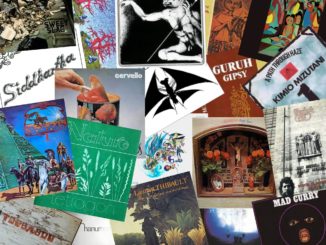
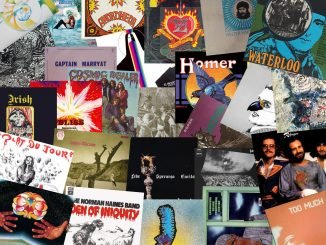
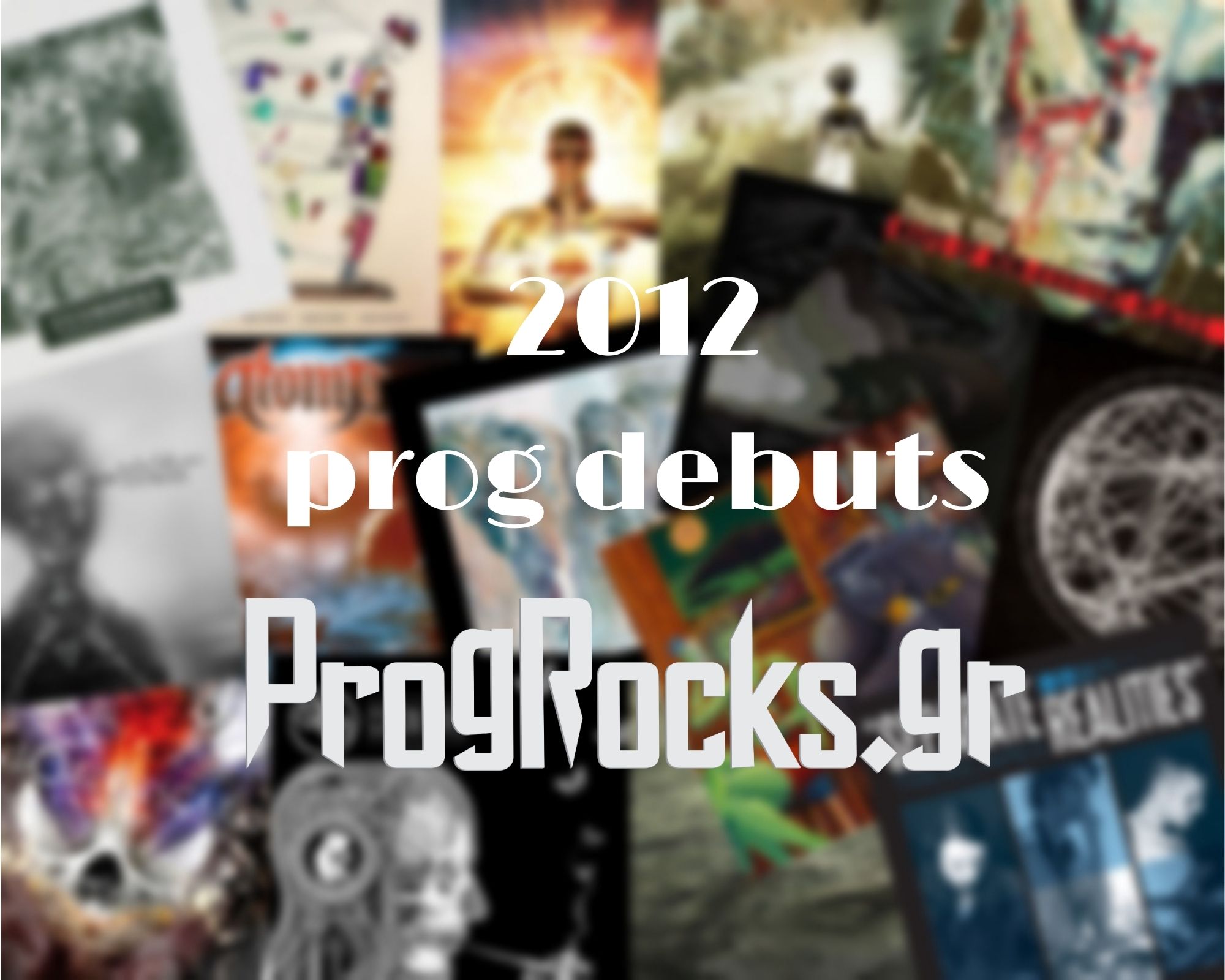
Be the first to comment